-
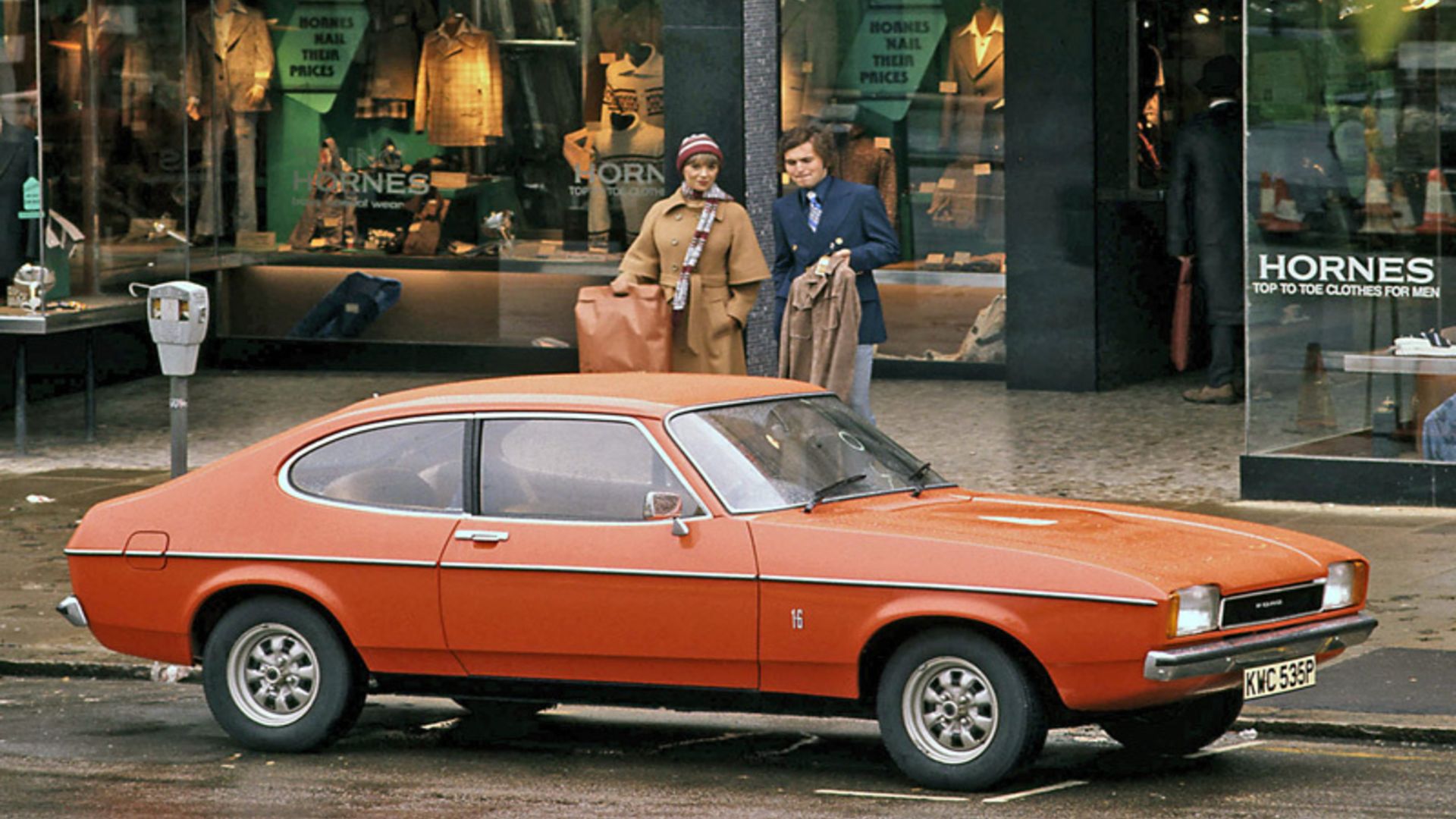
A new Ford Capri crossover?
© FordThere are widespread reports that Ford plans to bring back the Capri nameplate. The iconic badge could be worn by a sporty crossover EV, based on the same platform as the new Explorer. We’ve already seen the Mustang reborn as an electric SUV, so the idea of a high-riding Capri isn’t so surprising. Nonetheless, we wish Ford would return to its roots with a proper, low-slung Capri coupe. It might be ‘the car you always promised yourself’ all over again.
-
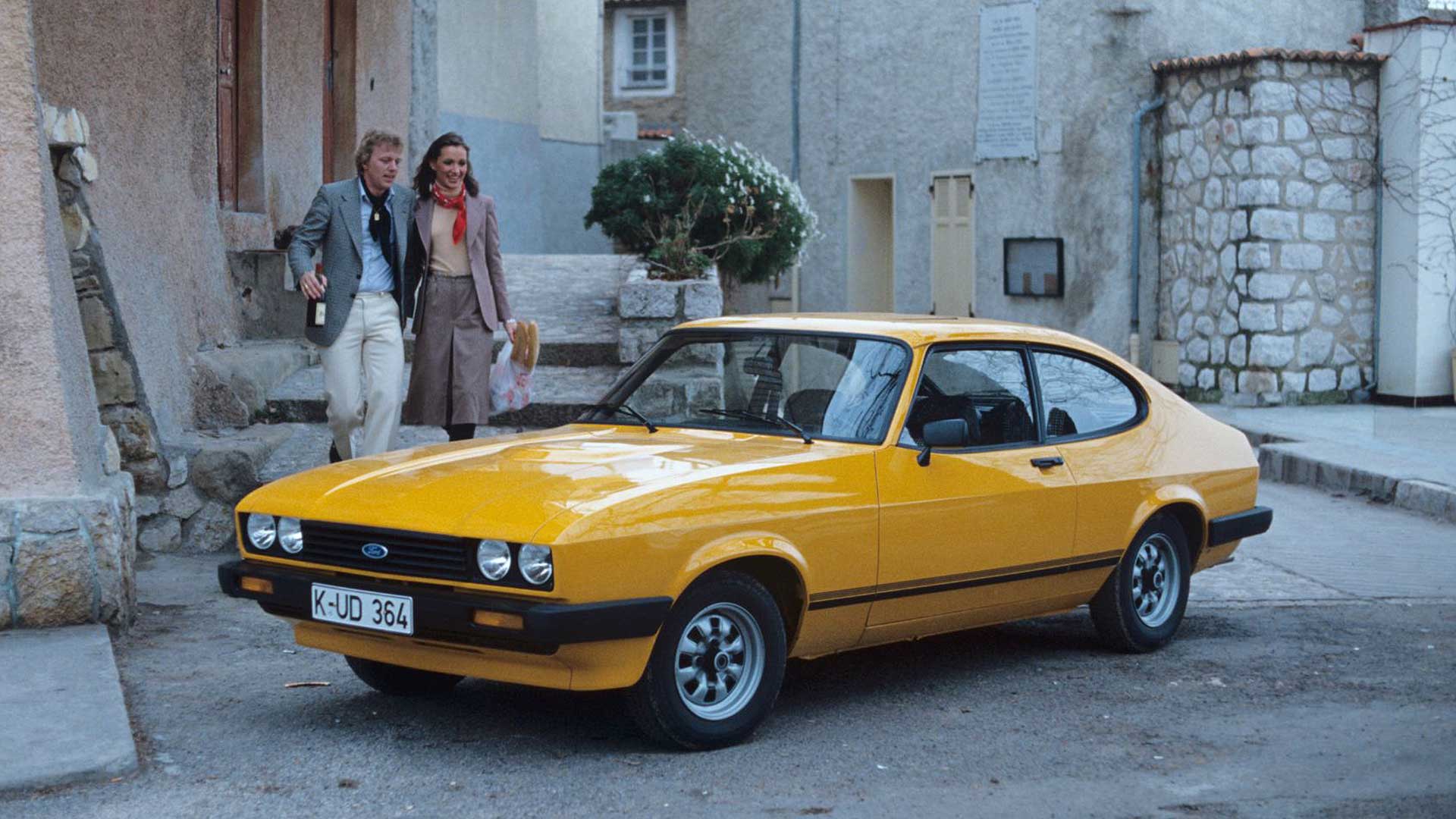
The story of the Ford Capri
© FordDuring its life, few cars were as loved, loathed and ridiculed as the Ford Capri. In a production run spanning 18 years, it amassed sales approaching 1.9 million, upset the establishment on the race tracks of Europe, and appeared in more television shows than Ian McShane. Join us for a nostalgic look at Britain’s love affair with the Ford Capri.
-

Inspired by the Ford Mustang
© FordAs pointed out by Jeremy Walton in his excellent book Capri: The Development and Competition History of Ford’s European GT Car, the success of the Capri was down to two major influences: the Mustang and the wealth of the buying public. Like so many success stories, it was the right car at the right time.
Ford launched the Mustang in 1964, using the relatively mundane Falcon compact car as a platform. It broke the mould, offering American baby boomers an affordable four-seat sporty car that majored on style and personalisation. Could a similar recipe be used to woo European buyers?
-
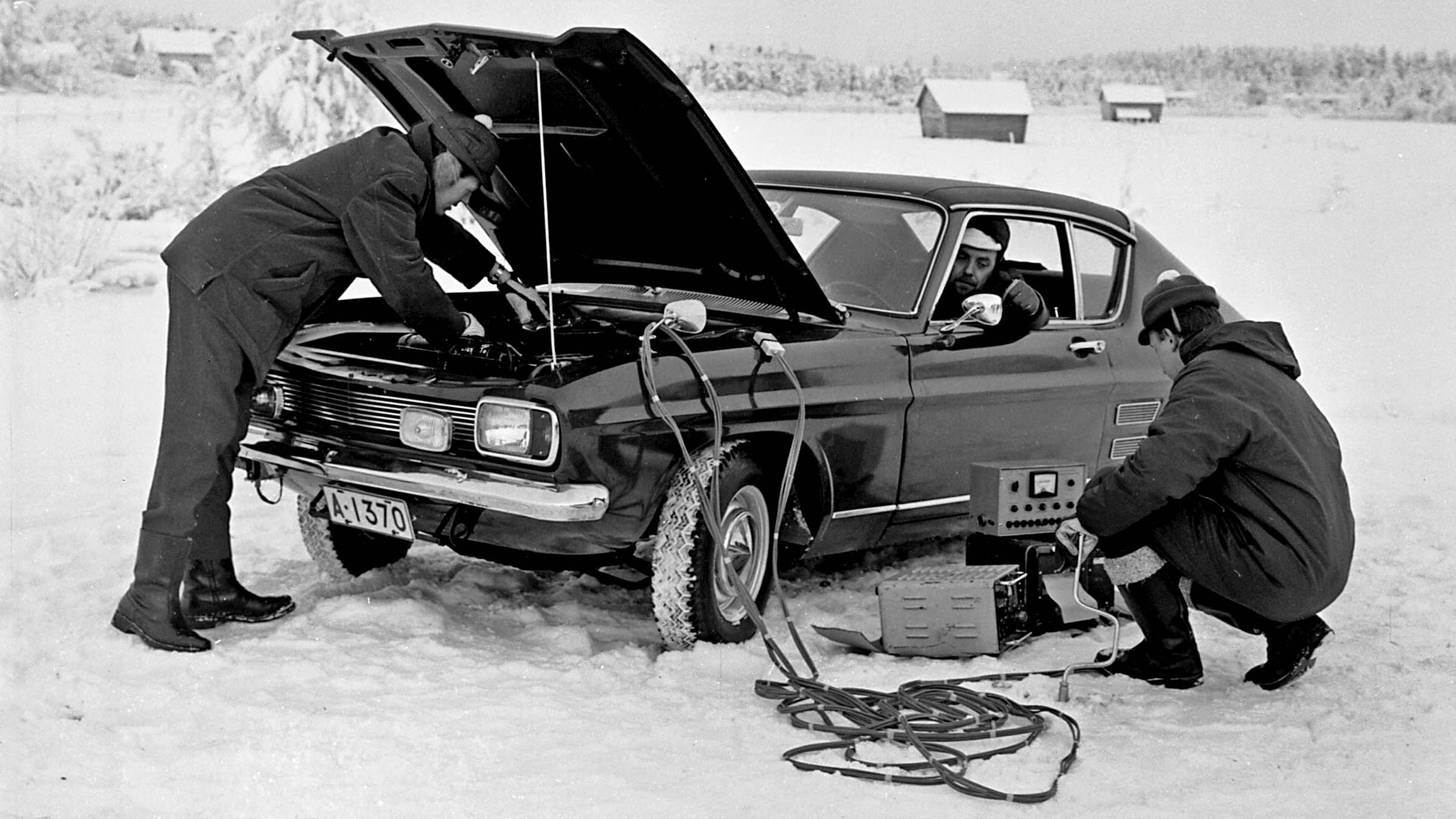
Launched in January 1969
© FordTo create the Capri, Ford used the humble Cortina as a platform and used a similarly evocative name to deliver some exotic showroom glamour. Project Colt was given the go-ahead in July 1966, with the launch taking place just three years later at the Brussels International Motor Show in January 1969.
The similarities with the Mustang were not surprising, but the Capri offered a better use of space. It might have been shorter and narrower than its American cousin, but it offered more room inside. This was important for Ford, as it wanted to market the coupe as a true four-seater.
-
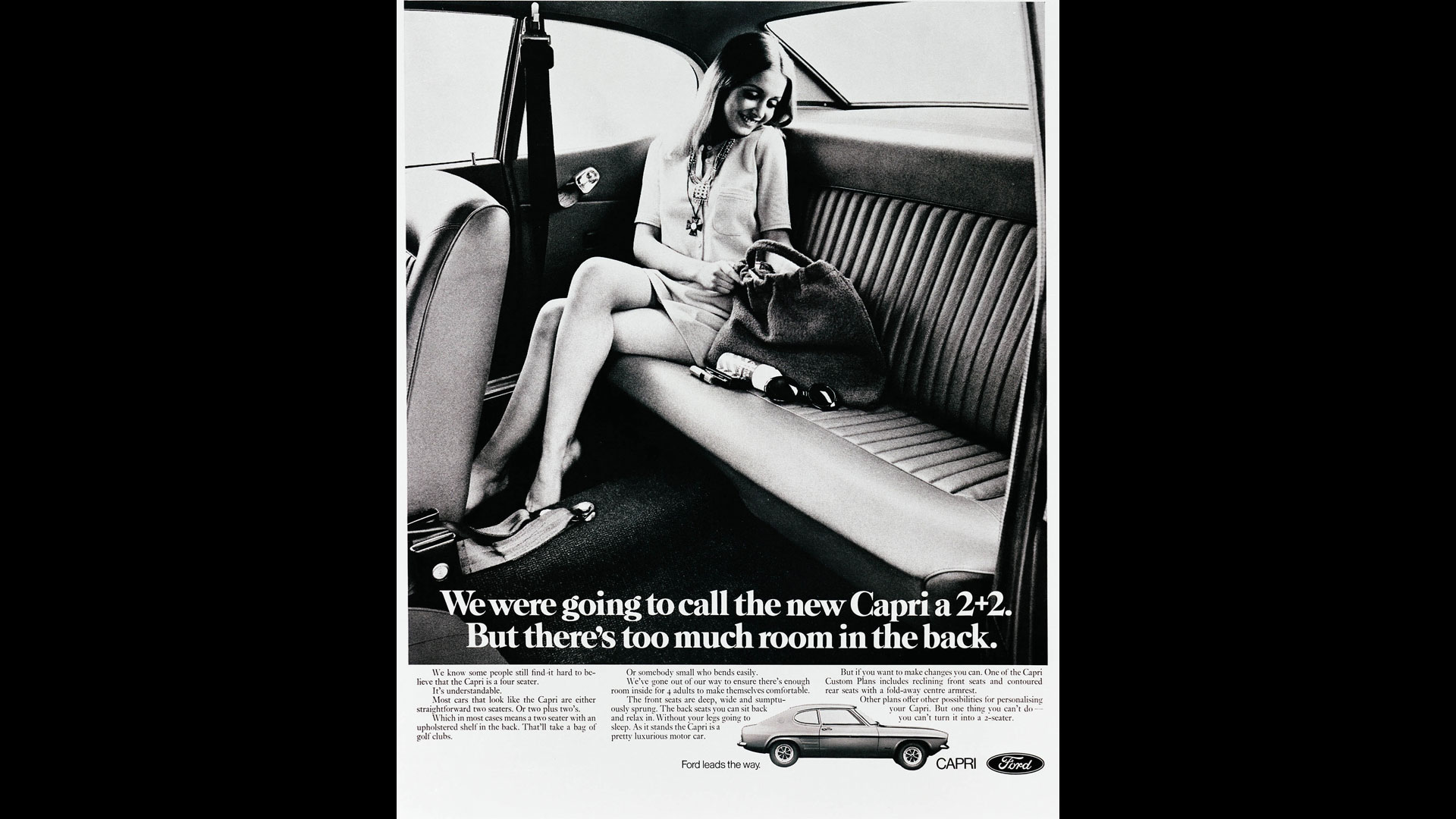
The car you always promised yourself
© Ford‘The new Ford Capri is the kind of car you’ve probably been hoping someone would make ever since you first put foot to clutch pedal,’ proclaimed the press advert in 1969. ‘A genuine fastback. That doesn’t cost a fortune. Handles like a sports car. And holds 4 people,’ it continued.
It looked a million dollars and offered a taste of glamour for the family man who would have otherwise been faced with driving a common saloon or estate car. And we do mean family man. Ford used the ‘sex sells’ approach to marketing, positioning the Capri alongside attractive women in exotic places. Later ads toned it down a little – the children and mother-in-law made an appearance – but there’s little doubt that Ford saw the Capri as a man’s car.
-
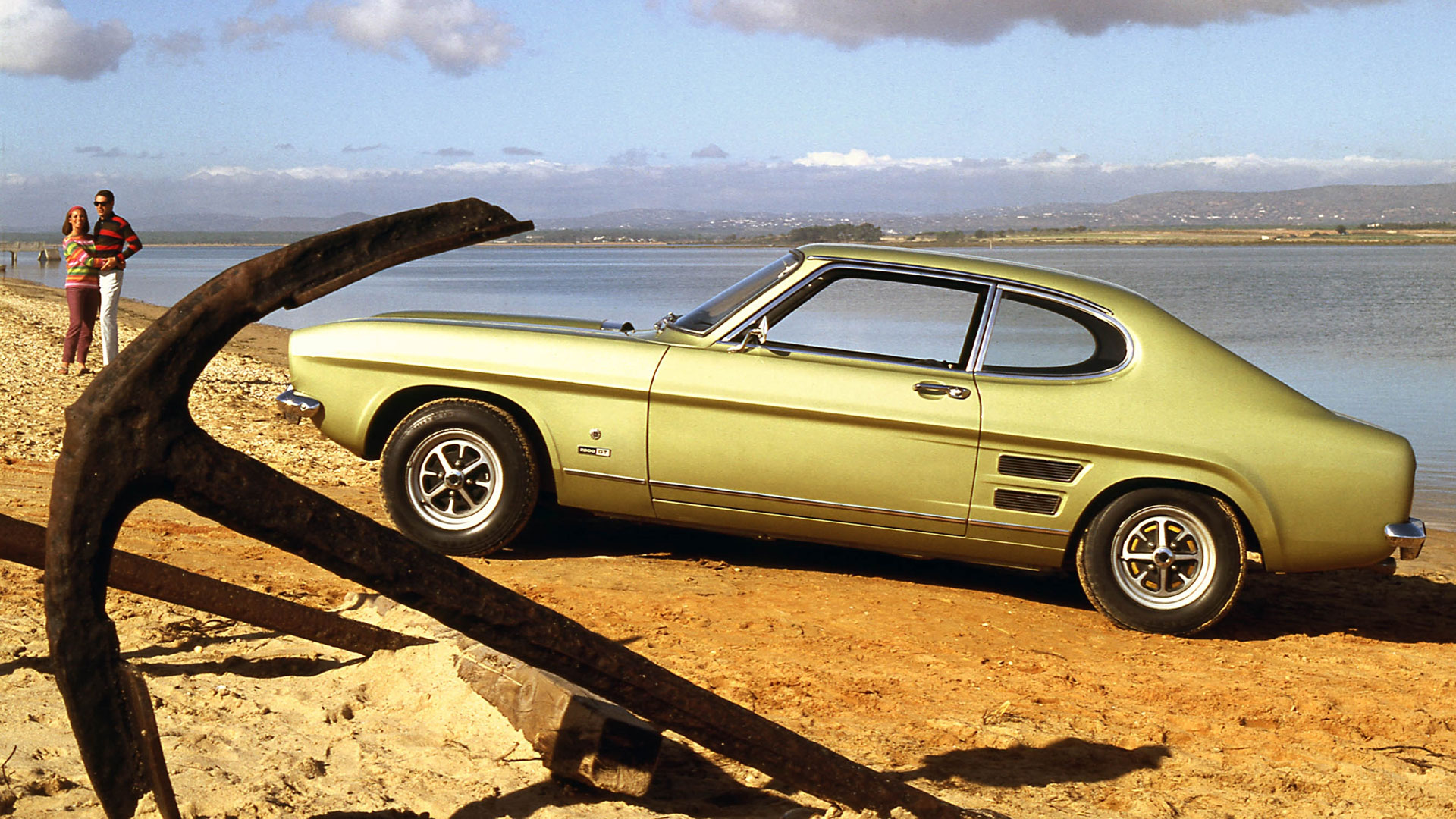
The best car Ford had produced
© Ford‘Forgetting the racy fastback shape for a moment, it is the best car that Ford [has] ever produced,’ claimed Autocar in February 1969. ‘They will sell a million, and quickly at that,’ it continued.
Autocar wasn’t wrong. It took just four years, six months and five days for the Capri to amass a million sales, with the car proving to be particularly popular in the United Kingdom. Germany was another prime territory for Ford, while the Capri was even sold alongside the Mustang in the US.
-
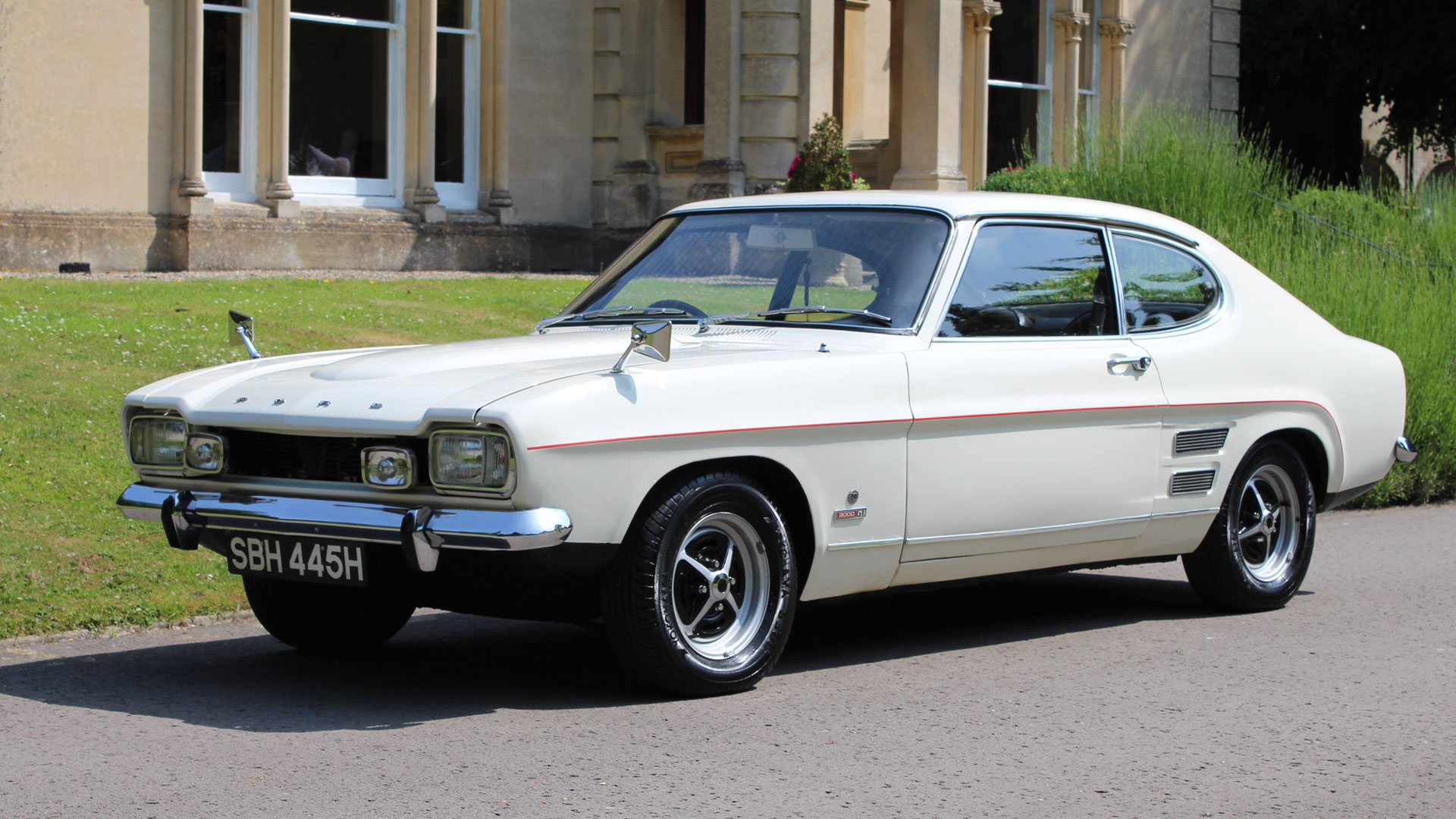
There was a Capri to suit all budgets
© Classic Car AuctionsPart of the Capri’s success was its ability to offer glamour and sex appeal, regardless of what lay beneath the long and protruding bonnet. At launch, it was available in 1300, 1600 and 2000 flavours – the 3000 arrived in October 1969 – with the 1.3 offering the same level of style as the 3.0, albeit without the performance.
Not that the Zodiac-sourced 3.0-litre unit was necessarily the engine you always promised yourself. It may have offered the grunt and a huge amount of straight-line speed, but it was also heavier, meaning the Capri 3000 was prone to understeer.
-

Your Capri your way
© Classic Car AuctionsThe Ford Mustang was successful, in part, thanks to a wide range of personalisation options. Colours, trims, options and accessories meant that it was possible to create a car that felt tailored to you. Ford took a similar approach with the Capri, offering a number of ‘custom packs’ from the outset.
L, XL, R-pack, X-pack, etc. – you could ensure that your Capri didn’t look the same as the Capri owned by Mr and Mrs Jones across the road. The Capri faced many imitators over the years, but none captured the hearts and minds quite like the Ford. By the time it went out of production in 1986, it seemed like everyone had an opinion on the Capri, and not all of these impressions were positive.
-
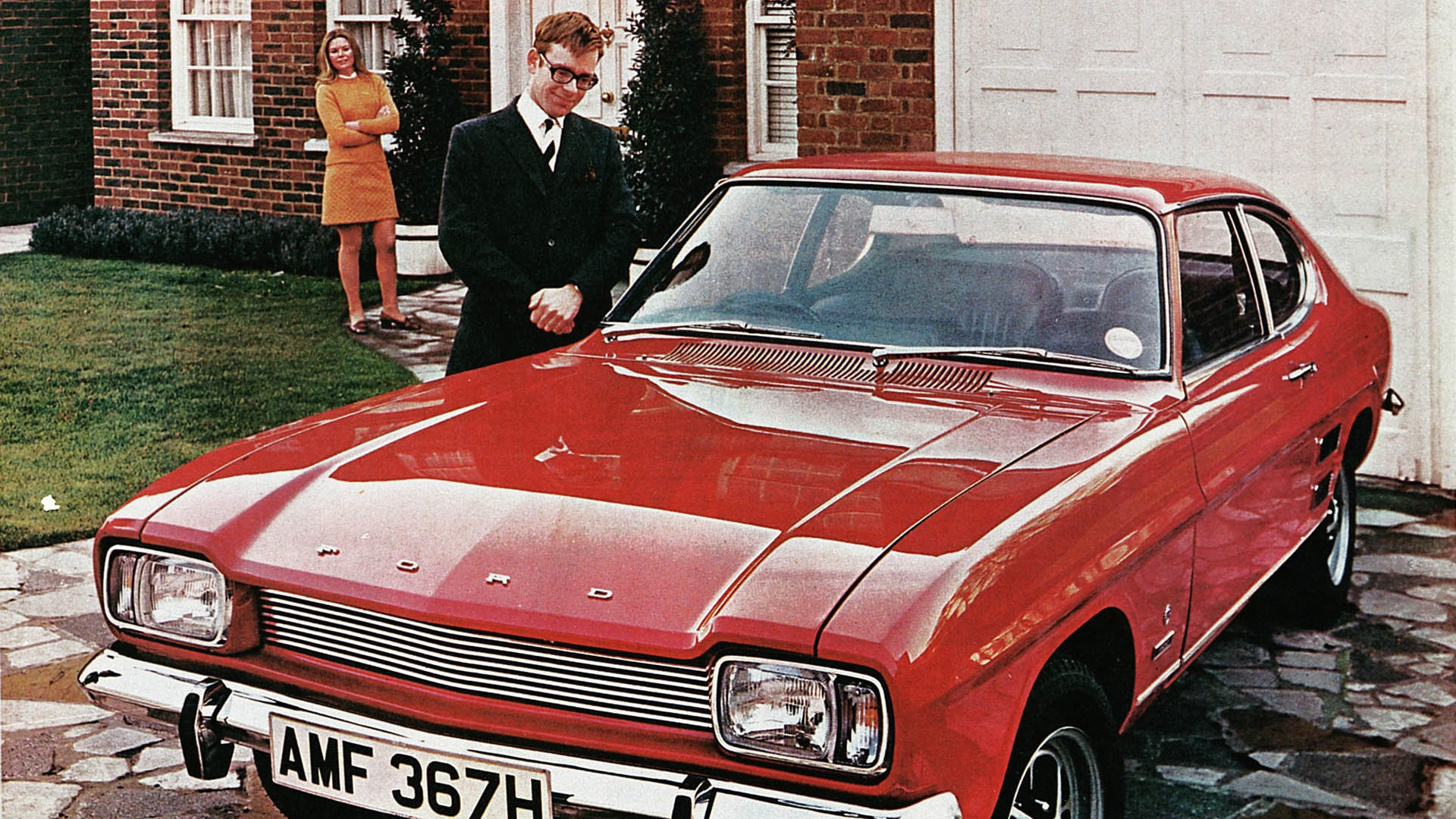
The Mk1 Capri makes its mark
© FordNot that the Mk1 Capri had to worry about a potential image crisis. In the early 1970s, it appeared to be riding on a crest of a wave, consistently appearing in the UK top 10 sales chart. The UK was the Capri’s biggest and best market, with 42,000 units sold in 1972. This was 11,000 more than in Germany and 15,000 more than the rest of Europe combined.
It even got off to a good start in the US, with Ford taking $3 million worth of orders following the Capri’s debut at the 1970 New York Auto Show. Not that it remained popular for long. Sales of the German-built Capri declined in North America, with no more cars imported after 1978.
-
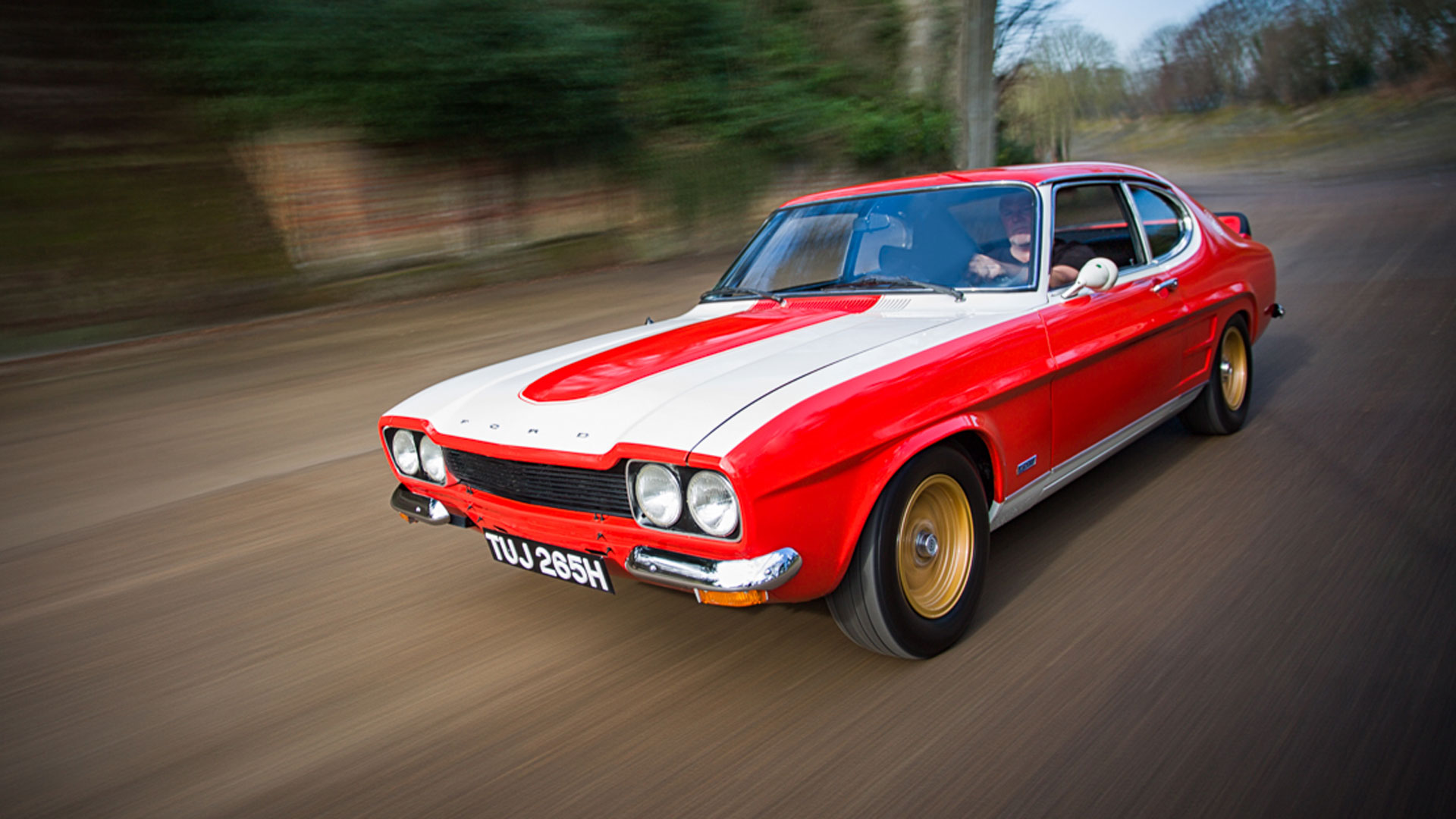
Ford Capri RS2600
© Silverstone AuctionsThe first Capri RS was given the go-ahead in 1969, with the task of bringing the RS2600 to market left to the team at the Ford Advanced Vehicle Operation (FAVO) plant in South Ockendon. The RS2600 first appeared as a partial mock-up at the Geneva Motor Show in March 1970, before going on sale in September of the same year.
Following the construction of three prototypes, a further 50 were developed for homologation purposes, with RS2600 production taking place in Cologne and Saarlouis. In total, 3,532 cars were built, including the prototypes and homologation specials.
-
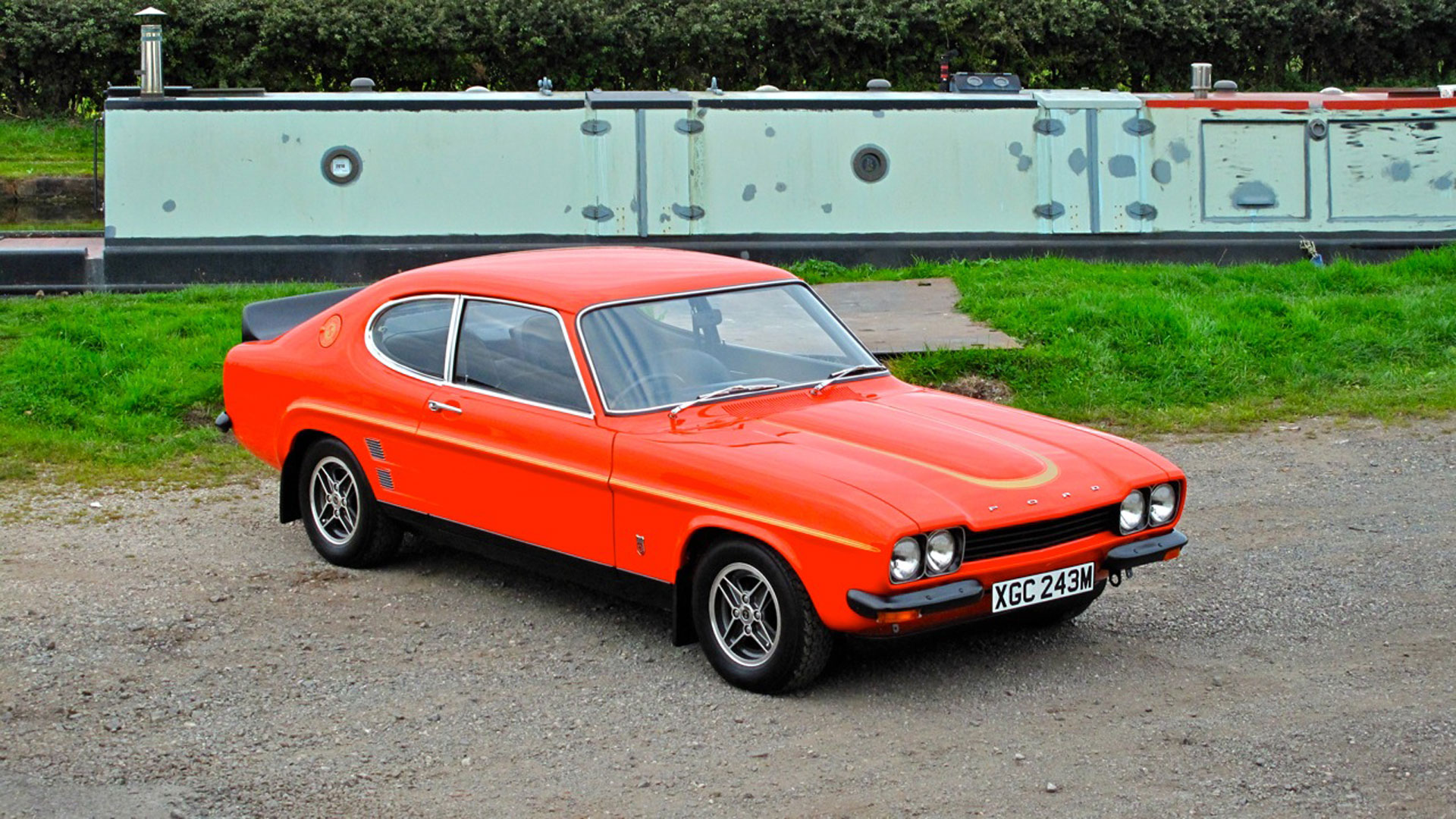
Ford Capri RS3100
© Silverstone AuctionsIn 1973, the second Capri RS arrived in the form of the Halewood-built RS3100. By now, the Mk1 Capri was living on borrowed time, while a number of external factors meant that an expensive and specialist performance Capri was a hard sell. Although 250 RS3100s were built, some had to be exported to Australia, while others were driven by Ford area sales managers.
It used the standard 3.0-litre Essex V6 engine, with the bore enlarged to create 3,091cc. Even with a 125mph top speed, a 0-60mph time of 7.3 seconds and a unique ‘Ducktail’ rear spoiler, Ford didn’t find it easy to sell the RS3100. In the wake of the fuel crisis, a list price of £2,450 seemed like an exorbitant indulgence, resulting in some sizable discounts.
-
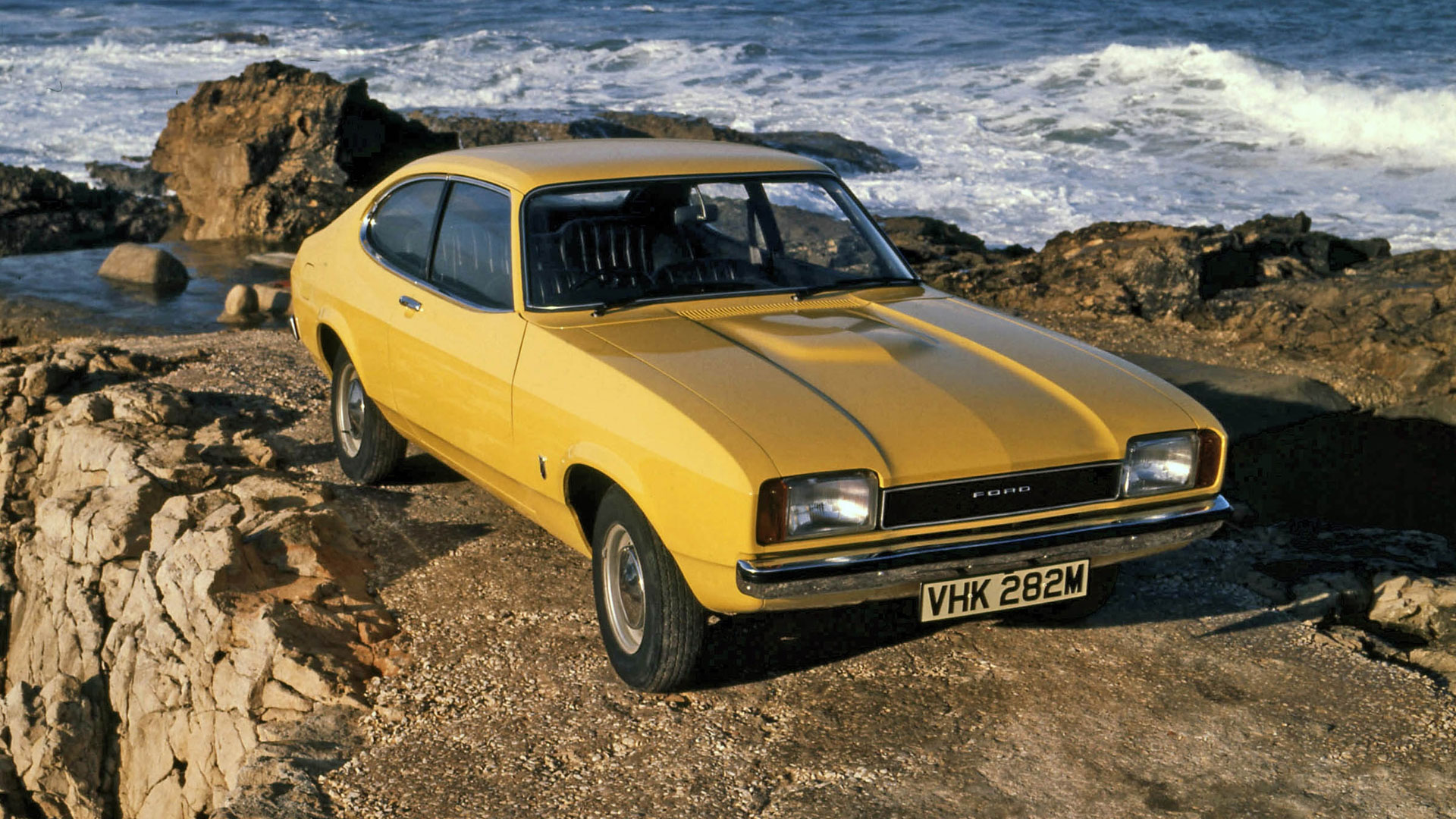
Enter the Capri II
© FordAs Ford struggled to shift the RS3100, the Capri II started to appear in showrooms. The company began working on the second-generation model in 1970 with the project going under the name of ‘Diana’. Ford had a habit of using girls’ names for its project cars – the restyled Escort was called ‘Brenda’, while the later Mk3 Capri was known as ‘Carla’.
If the RS3100 appeared out of touch, the Capri II seemed perfectly in-tune with the market created by the oil crisis of 1973. The Capri had already seen its best single year in terms of sales volume – 238,913 units found homes in 1970 – and accumulative sales had hit the million mark in 1973. But, after a good year in 1974, when the Mk2 sold 183,706 units, the Capri’s popularity was on the wane.
-

Practical not glamorous
© Classic Motor ShowMuch like its owners, the Capri had grown a little older and, dare we say, a little flabbier. The Capri II could boast 151 modifications, but the most obvious change was the introduction of a third door, or large tailgate. This may have been influenced by the American Ford Pinto, but there were also echoes of the Reliant Scimitar GTE and Volvo 1800ES in the car’s rear end.
Whatever, the third door answered two of the Capri’s key problems – a lack of luggage space and poor rearward visibility. The Capri II was a softer proposition, growing heavier, a little larger and, in the right trim, a touch more luxurious.
-
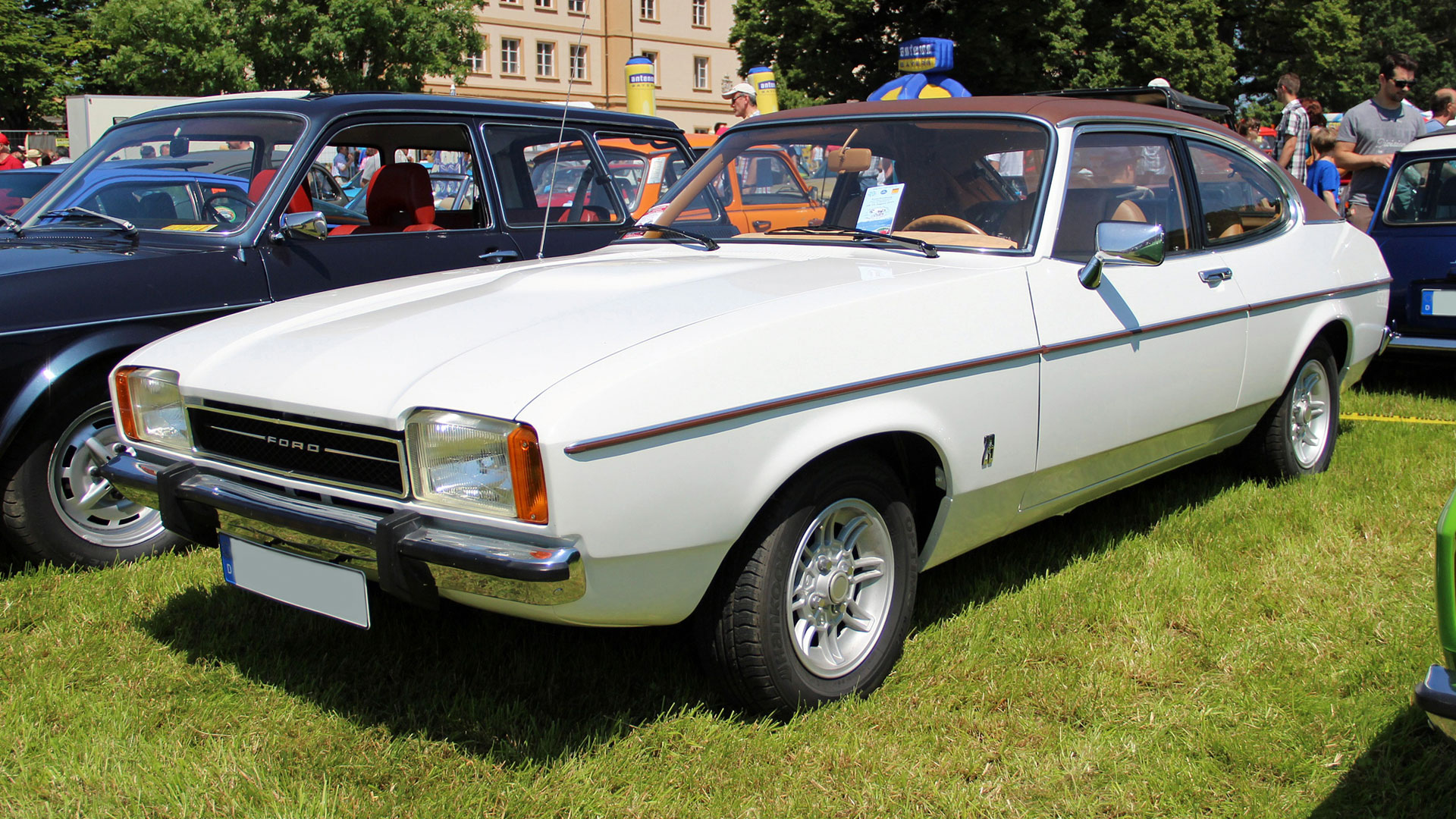
The Capri Ghia Rodney
© Steffs88 – WikipediaThe introduction of the Ghia was a sure sign that the Capri was getting softer. In many ways, this highlighted the importance of the UK market, where buyers preferred a more family-oriented Capri, as opposed to the audience in Germany, who fancied a more sporting flavour.
The German-built Capri Ghia – available with 2.0-litre and 3.0-litre engines – played on Ford’s ownership of the Turin coachbuilders and offered a range of extras, such as deep-pile carpet, tinted glass, metallic paint and alloy wheels. In Mk3 guise, the Capri Ghia had a starring role in Only Fools and Horses.
-
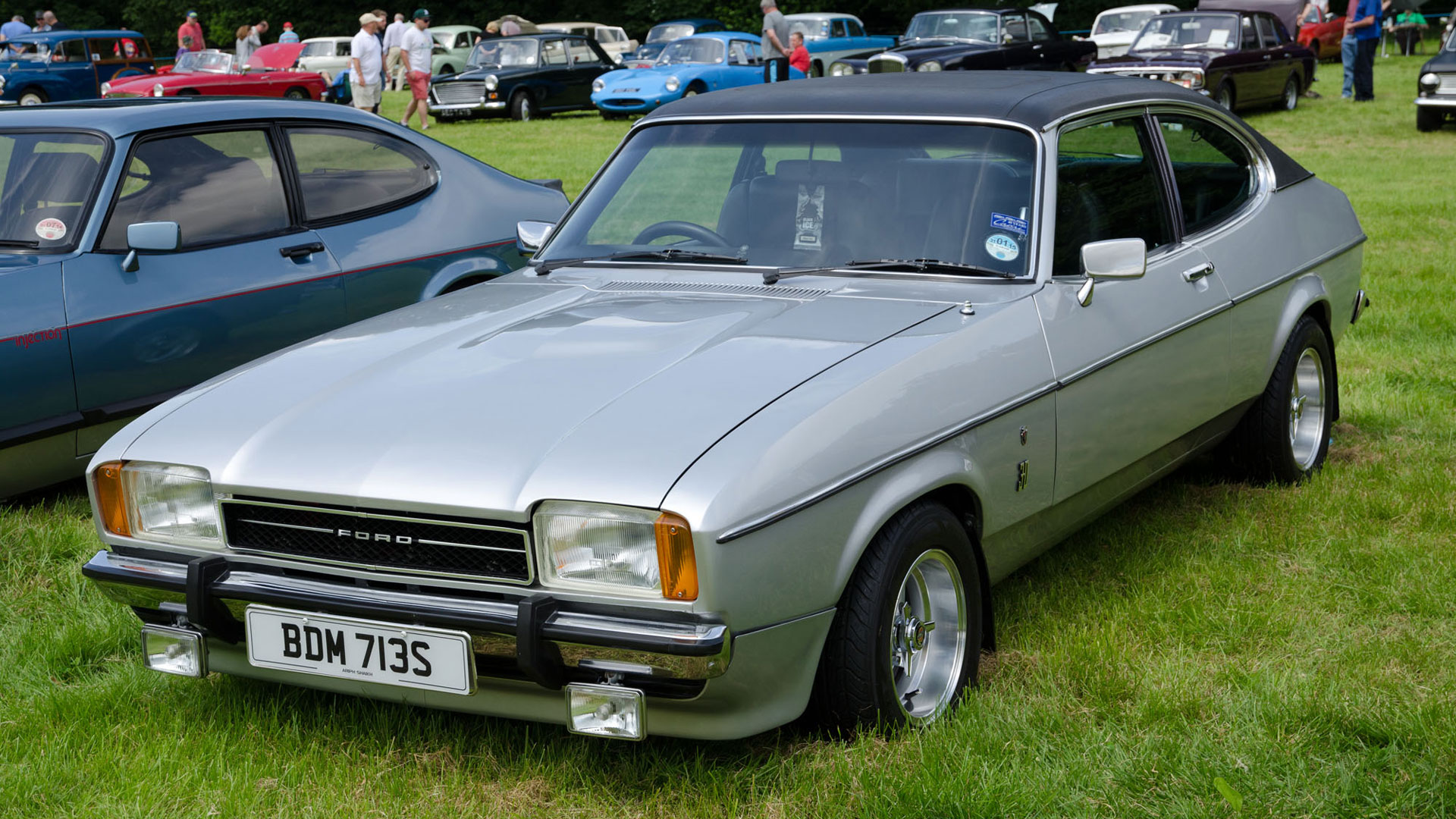
S’Express
© SG2012 – WikipediaBut the Ford Capri wasn’t quite ready to slip into full ‘pipe and slippers’ mode. With the oil crisis over, Ford was able to give the Capri a more sporting flavour with the launch of the new S model.
Unveiled at the 1975 Geneva Motor Show under the codename of ‘Midnight’, the S featured all-black coachwork and, when combined with gold striping, it had more than a hint of 1970s F1 about it. Announced as a limited production special, the Capri S proved to be so popular, it became a regular model by the end of the year. And while 1.6-litre and 2.0-litre versions were available, the 3.0S was the range sweet spot, and arguably one of the Capri’s finest variants.
-

Germany goes it alone
© FordThe final year in which Capri sales hit the six-figure mark was 1976 and, aside from a positive blip in 1979, registrations declined year-on-year until the car’s death in 1986. UK production at the Halewood plant ceased in October 1976, with 337,491 units built since production began in 1968.
This left Cologne as the only factory producing the Capri, with the German factory ceasing production of the ‘Federal’ Capri in August 1977. Did this signal the end for the Ford Capri?
-
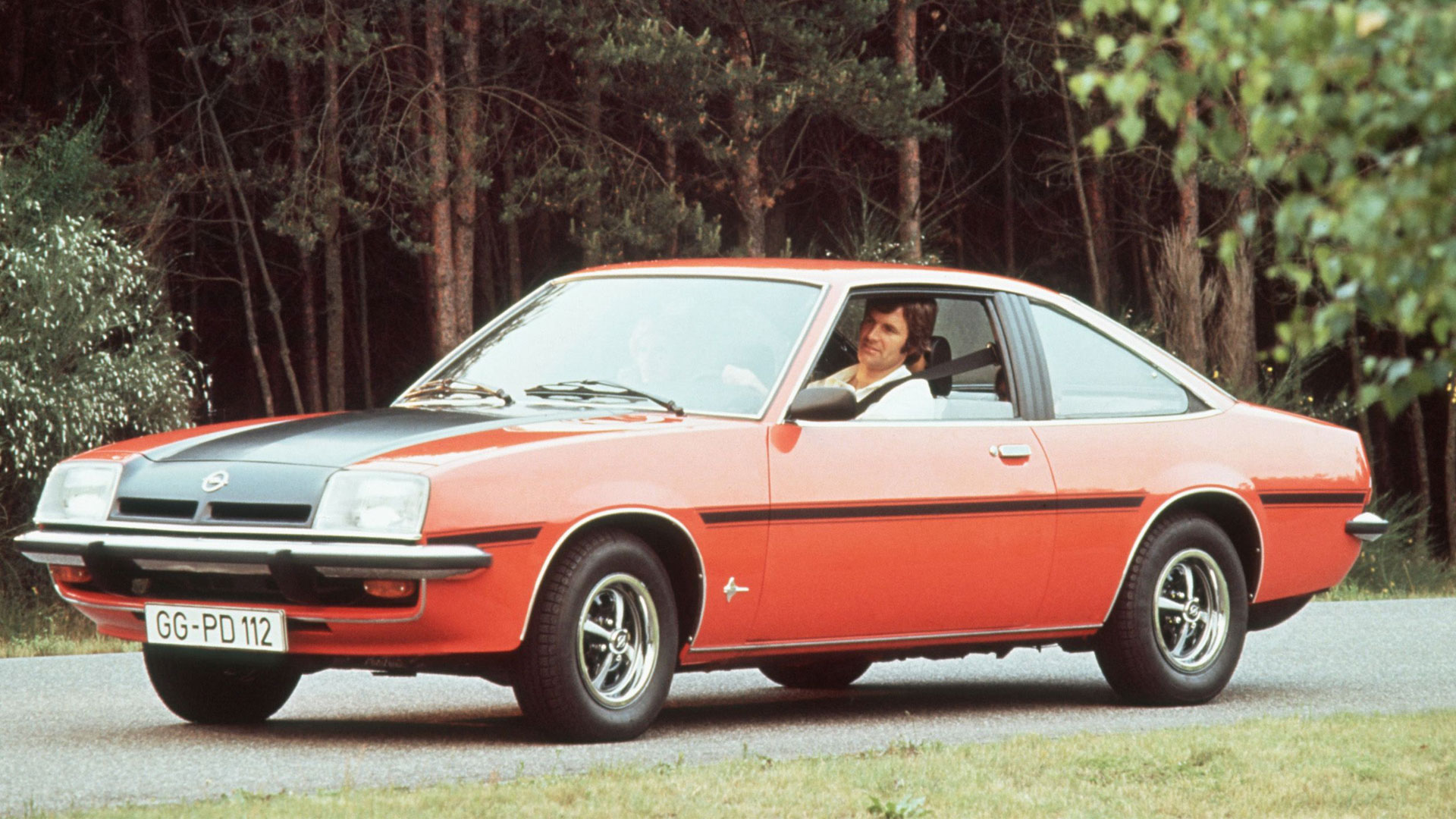
The beginning of the end
© OpelIn 1978, Capri production had slumped to 69,112 – around a third of the total in 1969. There are many factors contributing to the decline and it would be unfair to suggest that the Capri II was the primary reason for the car’s downfall. Yes, it was heavier, arguably less attractive and less sporting than the original, but there were other forces at play.
Buying a Capri was driven by desire and by 1978 there were other cars competing for the buying public’s pound and deutschmark. The Opel Manta, for example, along with the Volkswagen Scirocco and Toyota Celica, to name but three. We were also witnessing the birth of the hot hatch, a body style that would eventually stick a stake through the Capri’s heart.
-
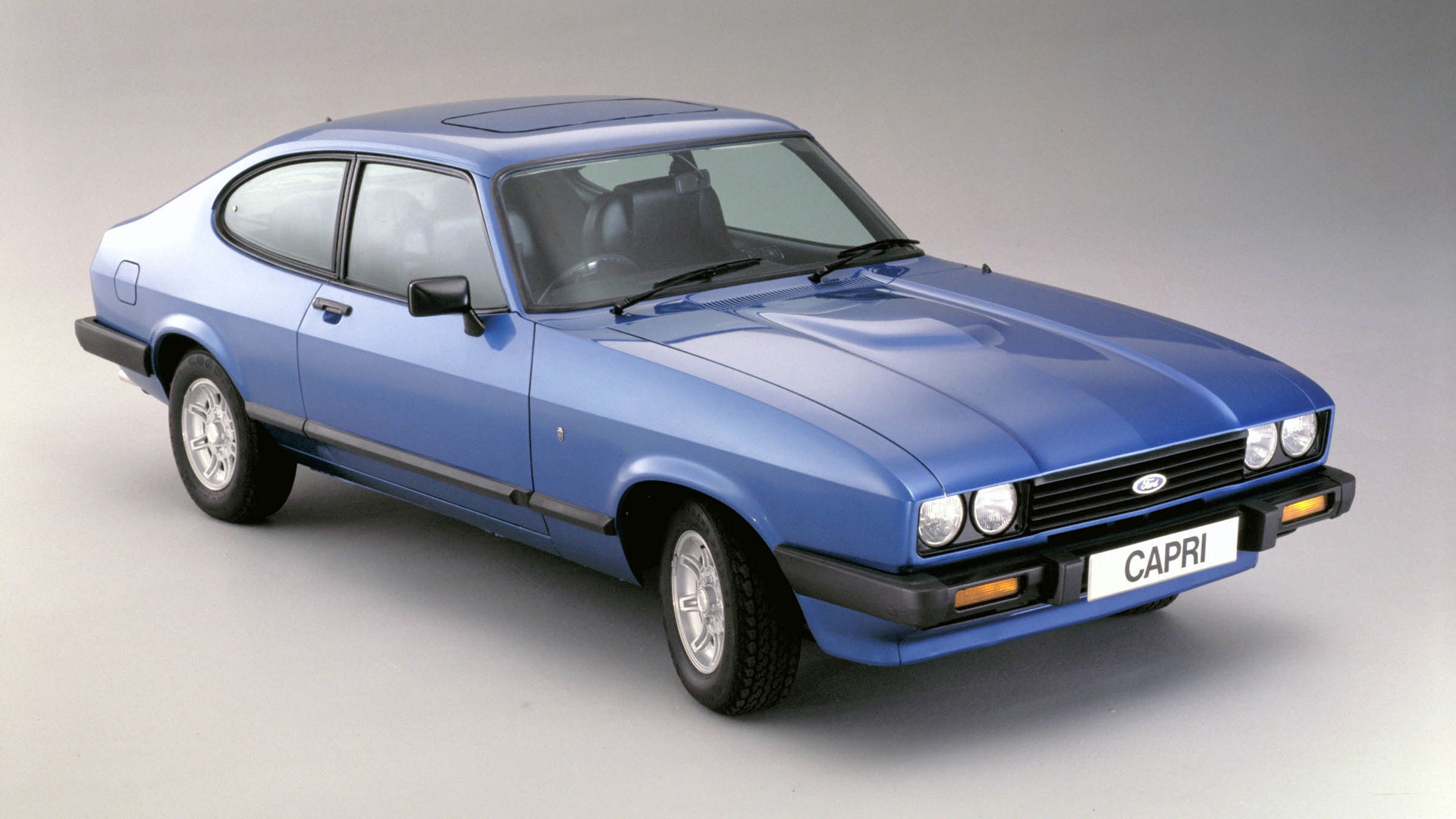
Project Carla
© FordBut there was still time for the Capri to enjoy a few more years in the limelight. Officially, the Mk3 was little more than a facelifted Capri II – Ford called it a ‘freshened’ Mk2 – but it must have struck a chord with the buying public. In its first full year of production, the Capri Mk3 achieved sales totalling 85,420, an increase of around 15,000 from 1978.
Sure, it was little more than a momentary blip – sales dropped to 41,755 in 1980 – but the initial enthusiasm showed a genuine desire for a refreshed Capri, even if the car was all but forgotten beyond the shores of Britain.
-
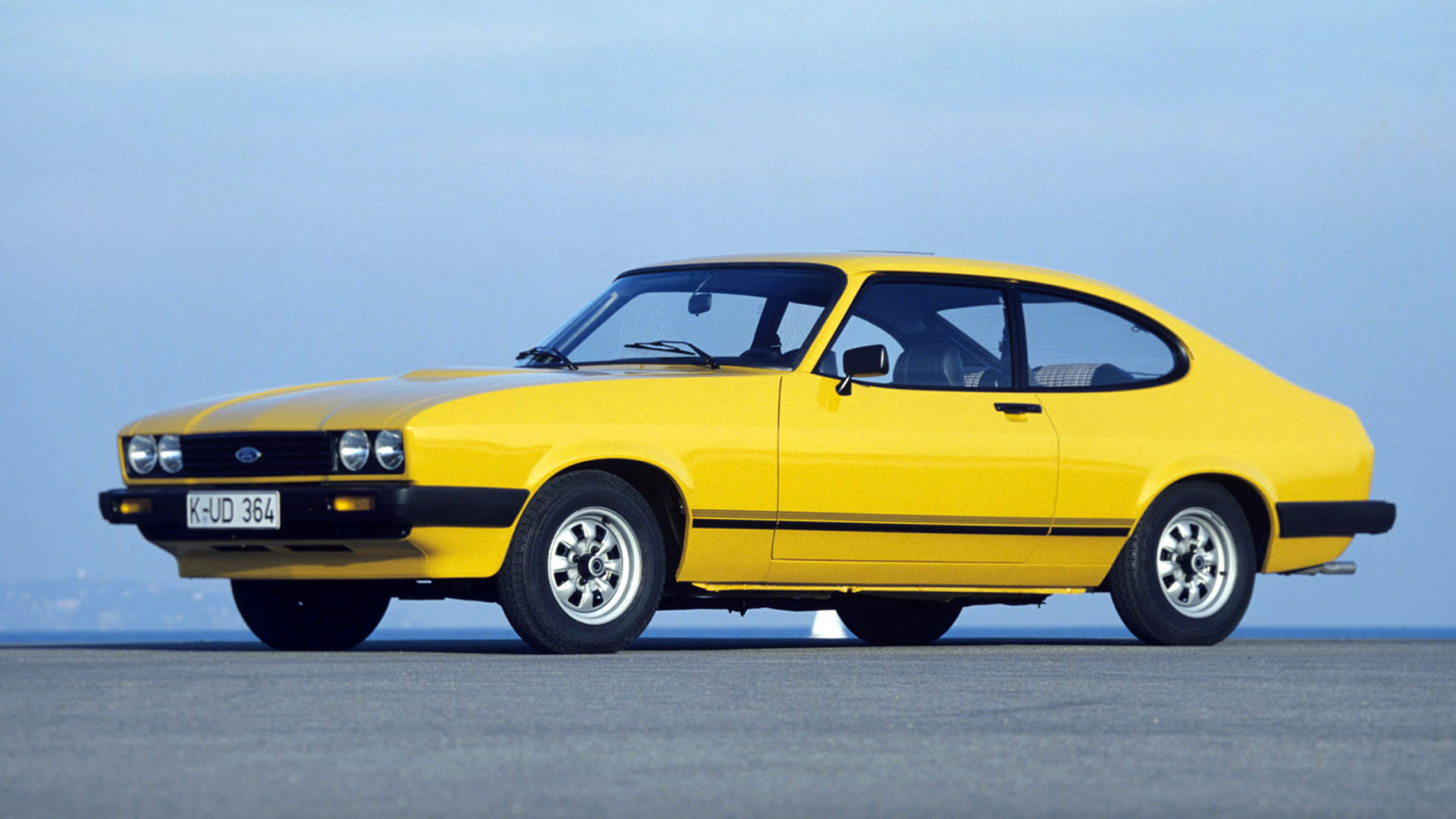
The Mk3 Capri
© FordThe Mk3 Capri was the best-resolved model since the RS2600, offering a terrific blend of sporting intent, lower running costs and better all-round performance, including improved fuel economy.
It also looked the part, helped by the four headlights, which harked back to the RS models and the Federalised car sold on the other side of the Atlantic. The Mk3 also featured the corporate grille, as seen on the Fiesta and Granada, along with Mercedes-like rear lights: ribbed for your pleasure.
-
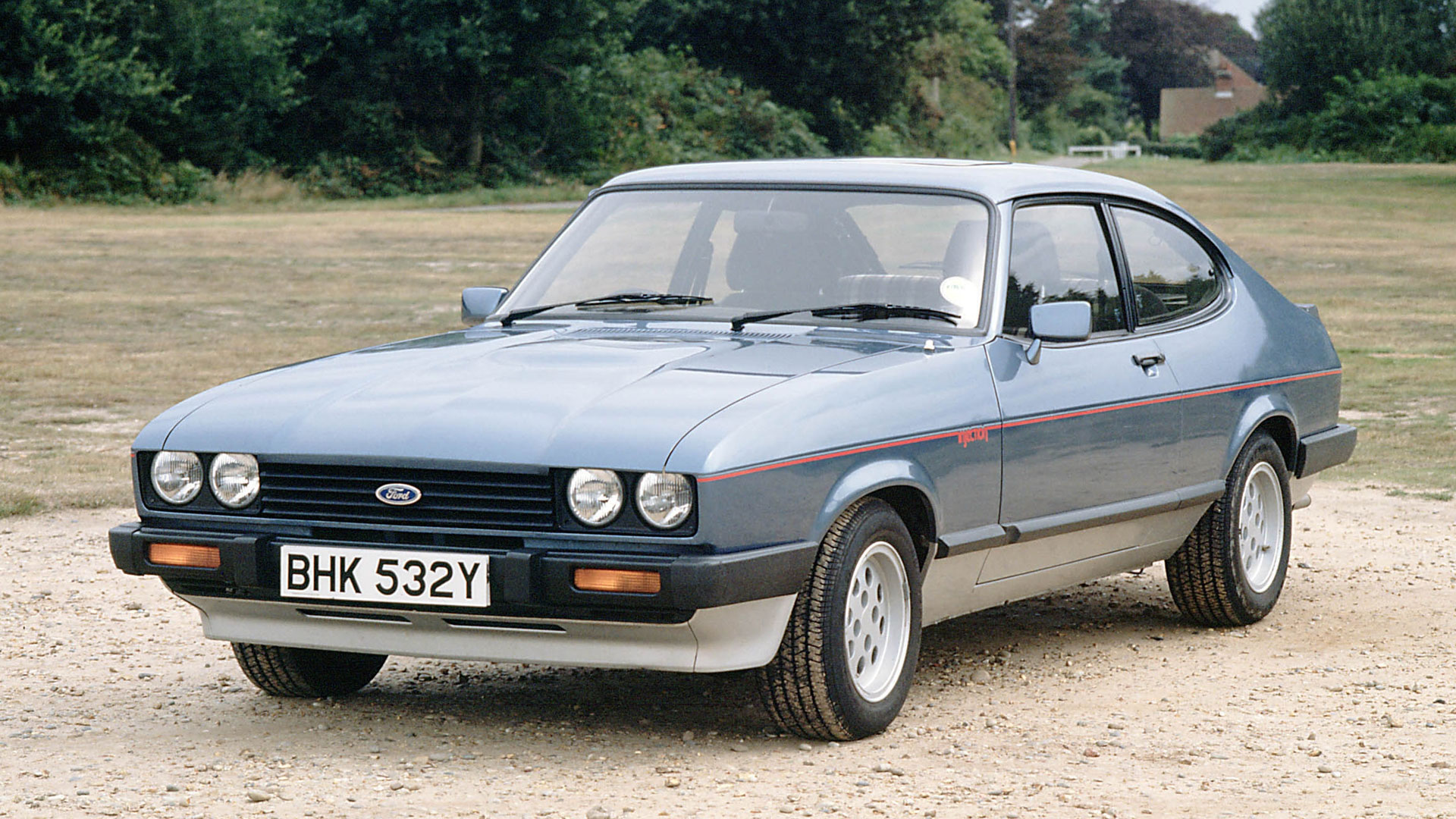
The 2.8 injection
© FordIn 1980, Ford established a new Special Vehicle Engineering (SVE) division. Its first brief was to develop a fuel-injected V6 Capri. A new flagship was required, as the 3.0-litre engine was essentially dead, save for its use in the Ford Transit, and the Capri needed a performance version to survive.
The result was the 2.8 injection, initially with a four-speed gearbox and later with a five-speed. It was an immediate success, even earning the Capri a place in the sales top 10 in August 1981. The SVE department went on to develop many fast Fords, including the Fiesta XR2 and XR2i, the Escort XR3 and XR3i, and the Escort RS1600i.
-
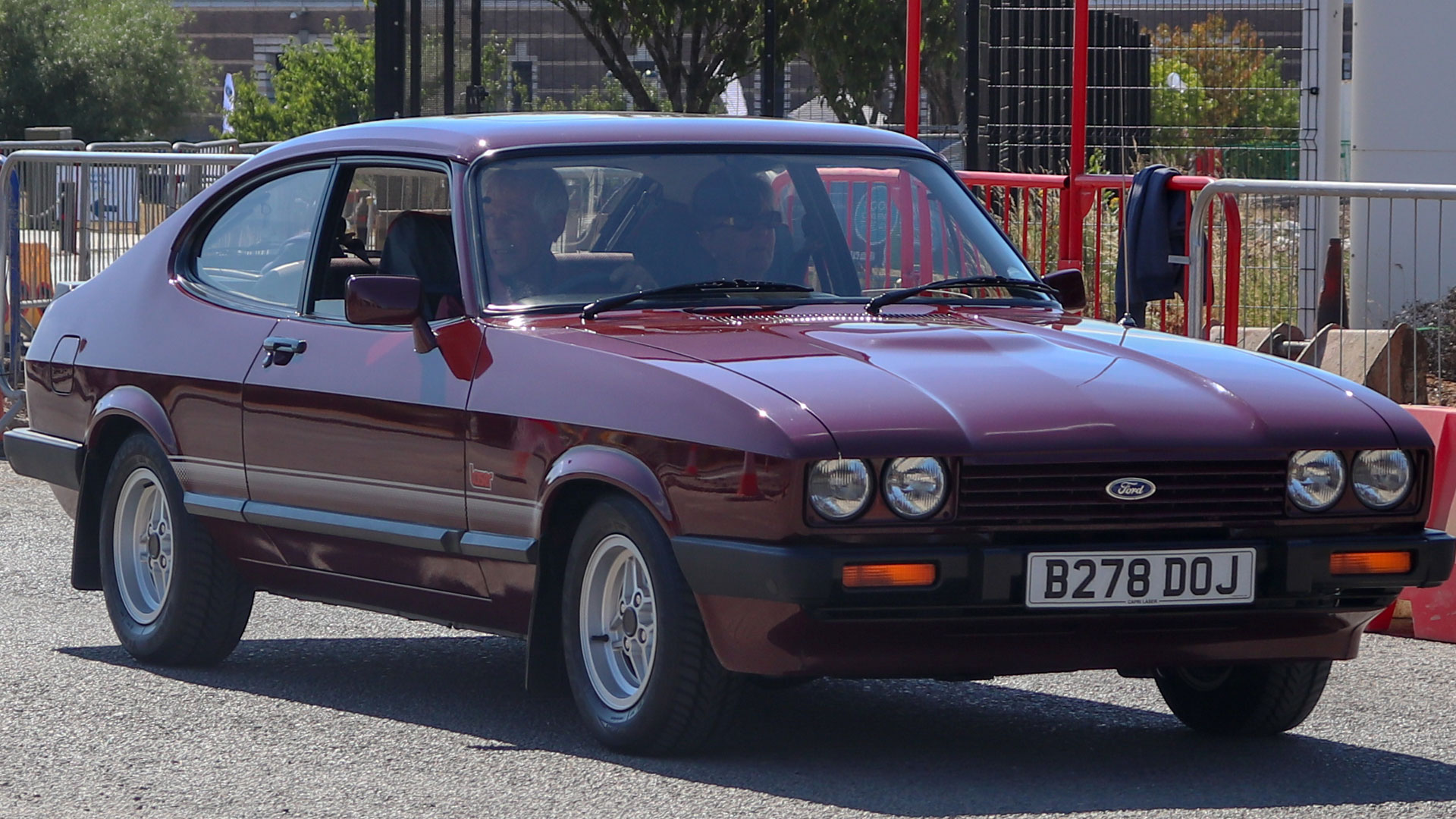
On borrowed time
© Vauxford – WikipediaThe 2.8i – and later 2.8i Special – may have been a welcome addition to the range, but by the mid-1980s, the Capri was on borrowed time. Sales in Europe were on the floor, while even in the UK, where the Capri remained popular, the car was beginning to suffer from an image crisis.
Ford did its best to keep the Capri on a life support machine, unveiling a succession of special editions to maintain interest and keep dealers happy. First came the 1.6 Calypso and 1.3 Cameo, followed by the 1.6 Cabaret, before the Laser of 1984 became the final throw of the dice for the four-cylinder models. In November 1984, only right-hand-drive production remained.
-
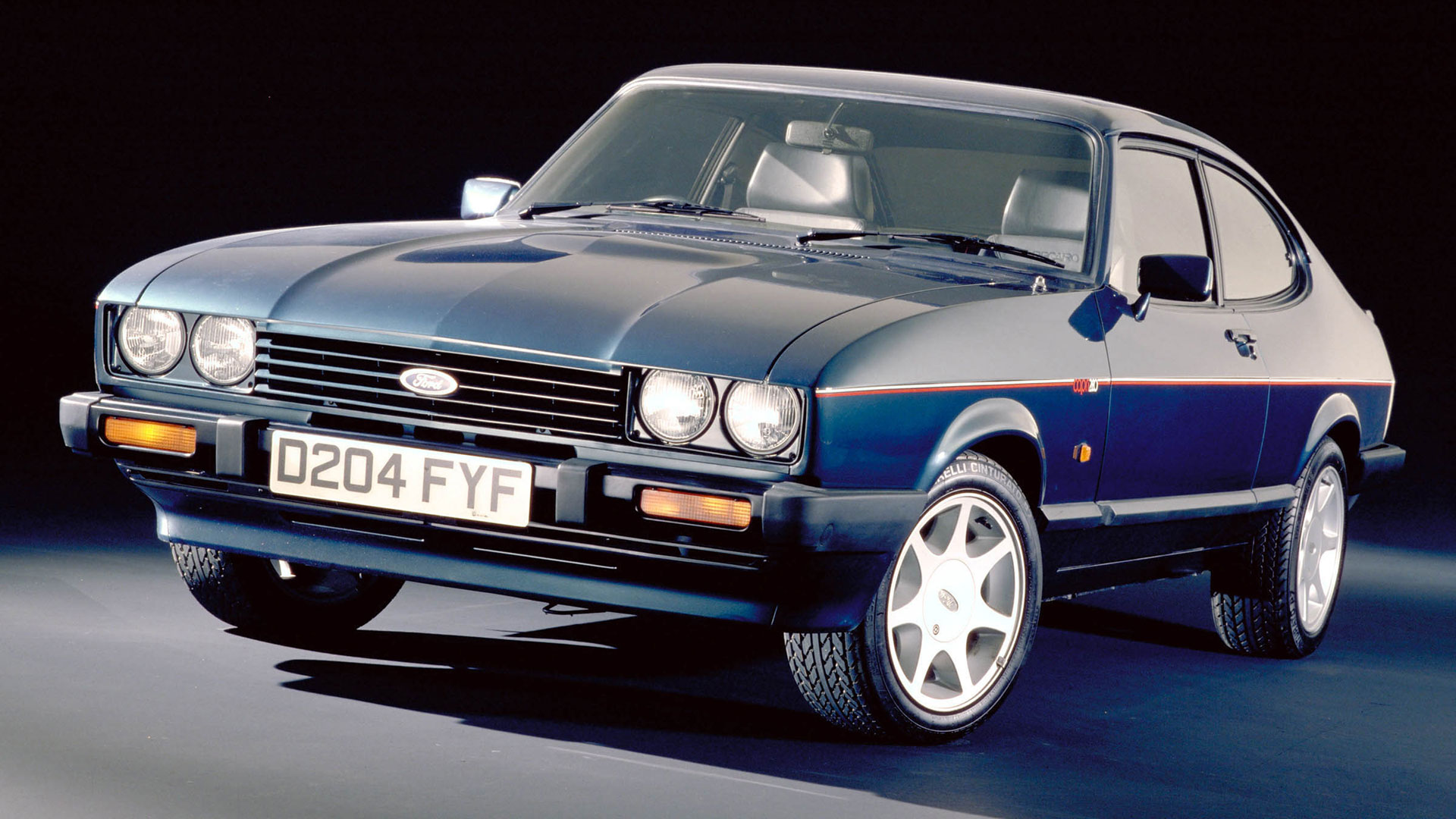
Bye-bye Capri
© FordTwo years later, in December 1986, the final Capri left the factory in Cologne, bringing to an end 18 years of production. Sales actually increased from 9,262 in 1985 to 10,710 in 1986, as customers grabbed the final opportunity to buy a new Capri. Some took the plunge on the Capri 280, although the final edition was nowhere near as successful as Ford would have hoped.
The original plan was to build 500 last-of-the-line Capri 2.8i Specials, under the project banner of Capri 500 SVP. All would be sold in the UK and all would command a sizable premium over the standard 2.8i Special.
-
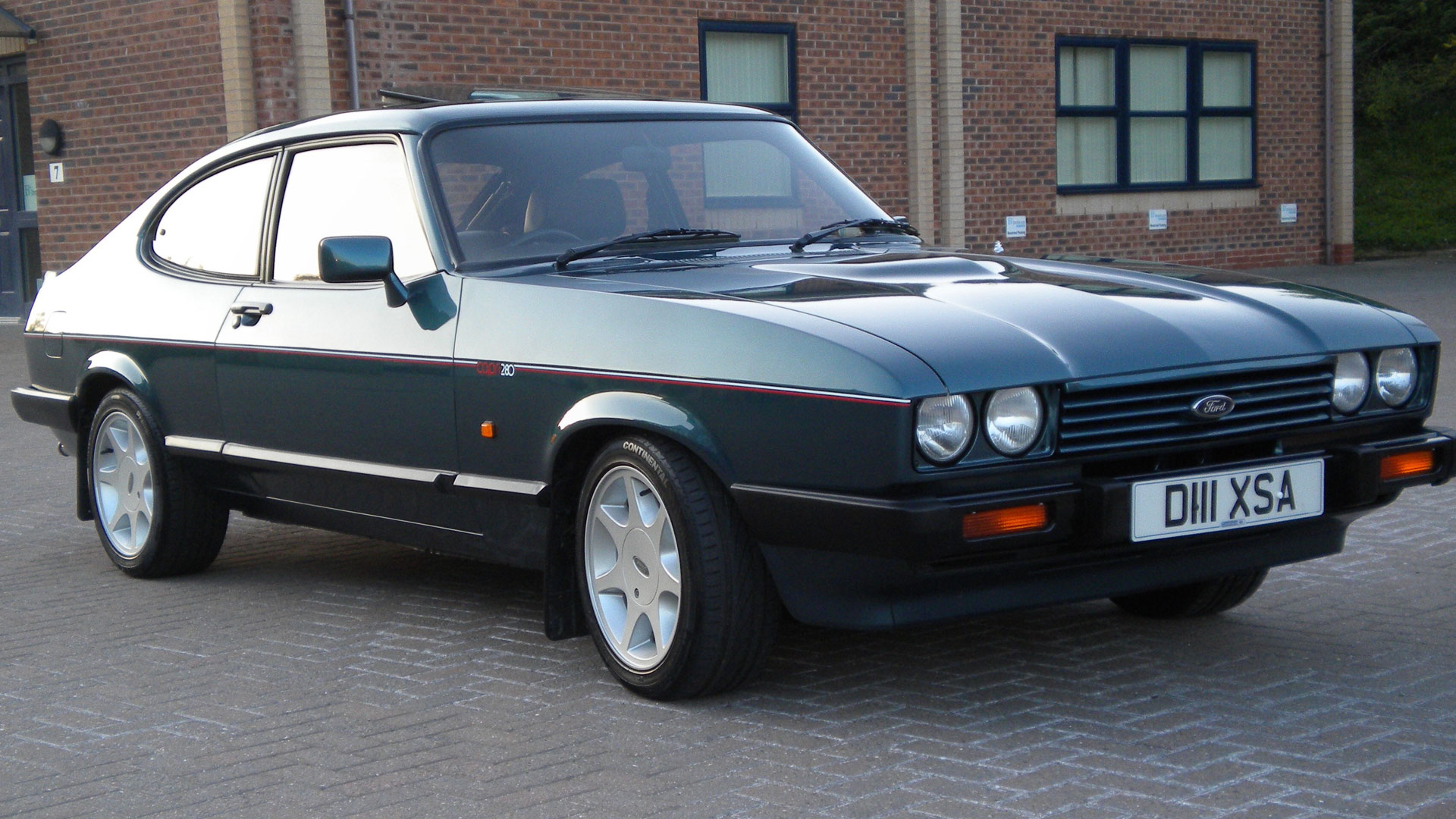
Capri 280
© Classic Car AuctionsUltimately, Ford decided to ship 1,038 Capri 280s to the UK – the 500 badge was hastily redrawn to take account of the change – but history shows that sticking to the original plan might have been a better option.
Too few people were willing to stump up the £11,999 required for what was chiefly a cosmetic upgrade over the standard 2.8i – 15-inch wheels, ‘Brooklands’ green metallic paint, grey leather with red piping and 280 decals. Some cars remained unsold well into 1988, even with a discounted price of £9,995.
-
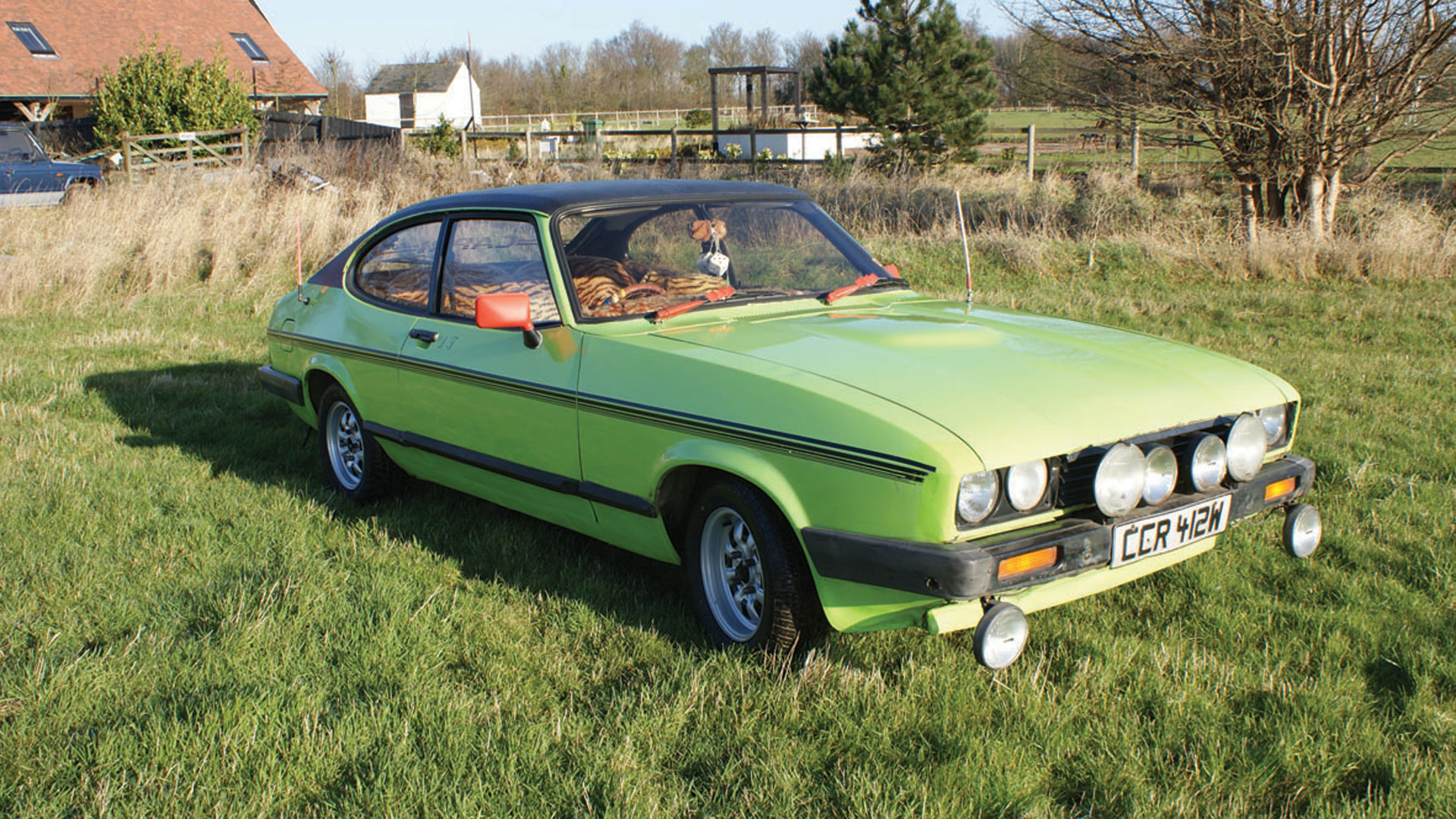
An image problem
© CoysIt didn’t take long for the Capri to lose its lustre. Almost overnight, the car you always promised yourself seemed to fall out of favour; its image steadily declining in the late 80s and throughout the 90s. Values plummeted, particularly of the four-cylinder models, and it became increasingly hard to sell all but the most legendary models. But more on this in a moment.
In the meantime, the Capri was becoming an object of ridicule. Appearances in The Professionals and Minder, while cool today, only served to cement a reputation of being past it – a car driven by wideboys, ‘Jack the lads’ and men with open shirts who found it hard to resist ploughing through stacked boxes left by the side of the road. When Del Boy needed a car to boost his image, it had to be a Capri Ghia, Rodney.
-
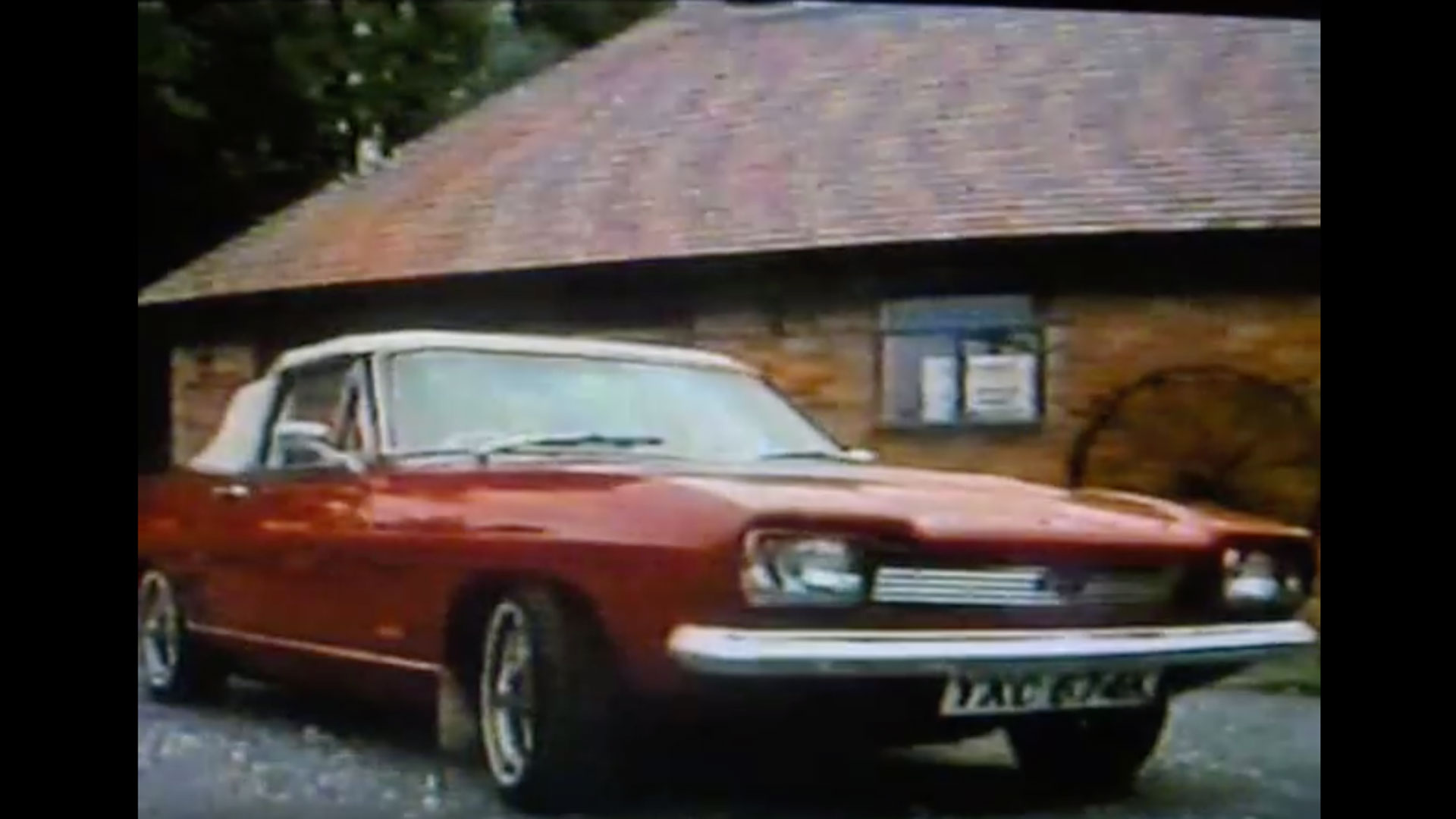
Crayford convertible
© YouTubeWe’ll come back to the rise, fall and rise again of the Ford Capri, but before we do, it’s worth remembering some of the rather special variants built during the car’s lifetime. There were a few Capri convertible conversions, but the Crayford was perhaps the most famous.
It arrived in 1969, and with a price tag of £2,421 for the 3000E, it wasn’t exactly cheap – this was more money than an E-Type. According to the Crayford Convertible Club, 37 Capris were sold, each one built in Germany. Abbotts of Farnham received 50 orders for its own Capri Convertible Drophead Coupe, but the company built and sold seven cars before the business collapsed.
-

Perana V8
© NewspressArguably the best Capri not to be officially sold in the UK, the Perana was the only Capri V8 to be sanctioned by Ford. Between 500 and 550 were built, each one sold via South African Ford dealers and with a full Ford warranty.
The Perana was based on the Mk1 3000 XL and powered by an uprated 5.0-litre V8 from the Mustang. Top speed was a smidgen over 142mph, while the 0-60mph time was eclipsed in just 6.1 seconds.
-
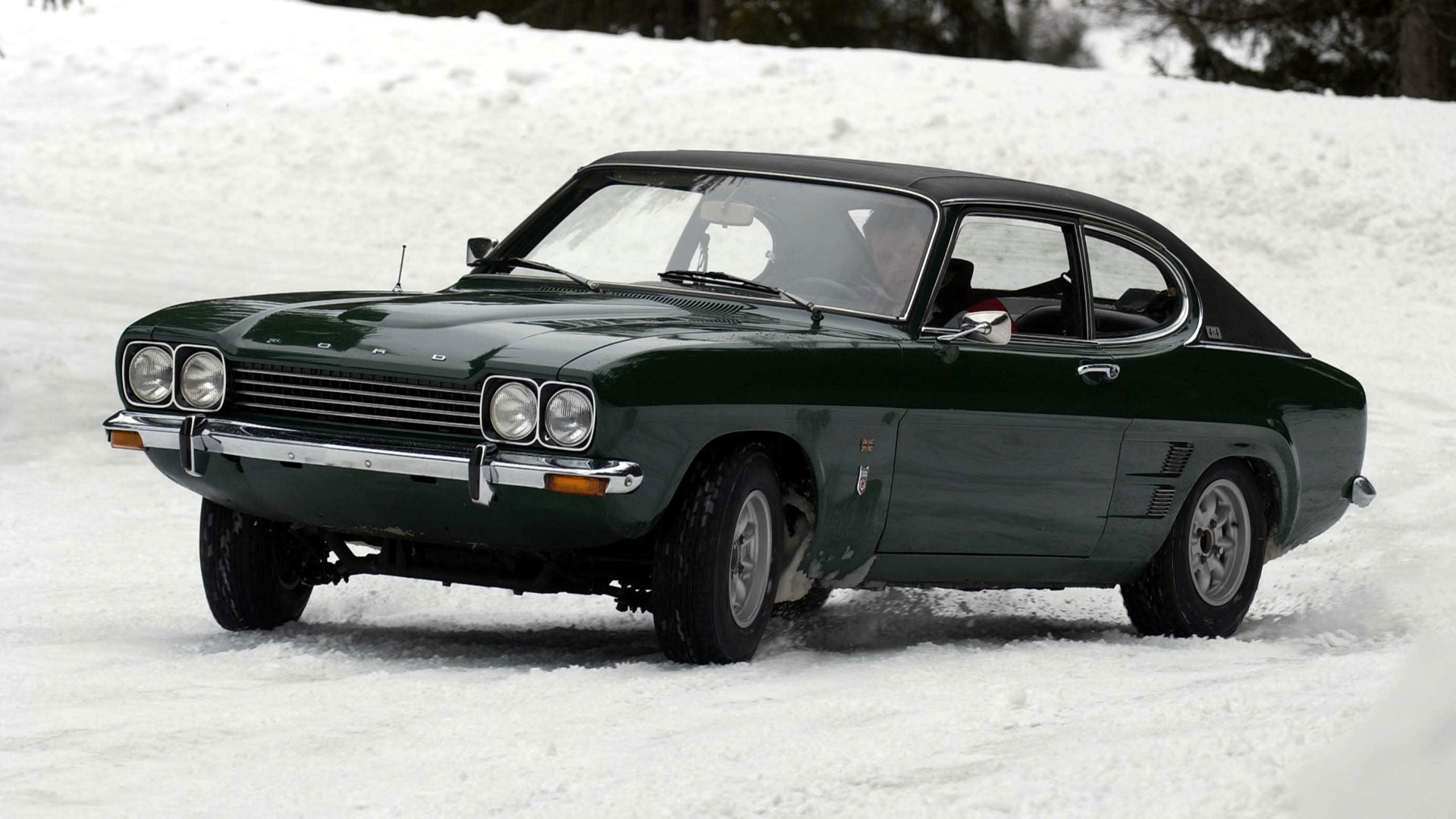
Four-wheel-drive Capri
© FordLong before the Audi Quattro was changing the face of world rallying, Ford toyed with the idea of building a four-wheel-drive Capri. A total of 17 prototype Ferguson four-wheel-drive Capris were built, with at least five used in competition.
“I suppose it really was the wrong image for Capri. In most potential customers’ minds, 4WD was just something you put in for off-road use. There would be few who would pay the premium for the extra safety such a system gives on the road,” said FAVO supervisory engineer, Rod Mansfield.
-
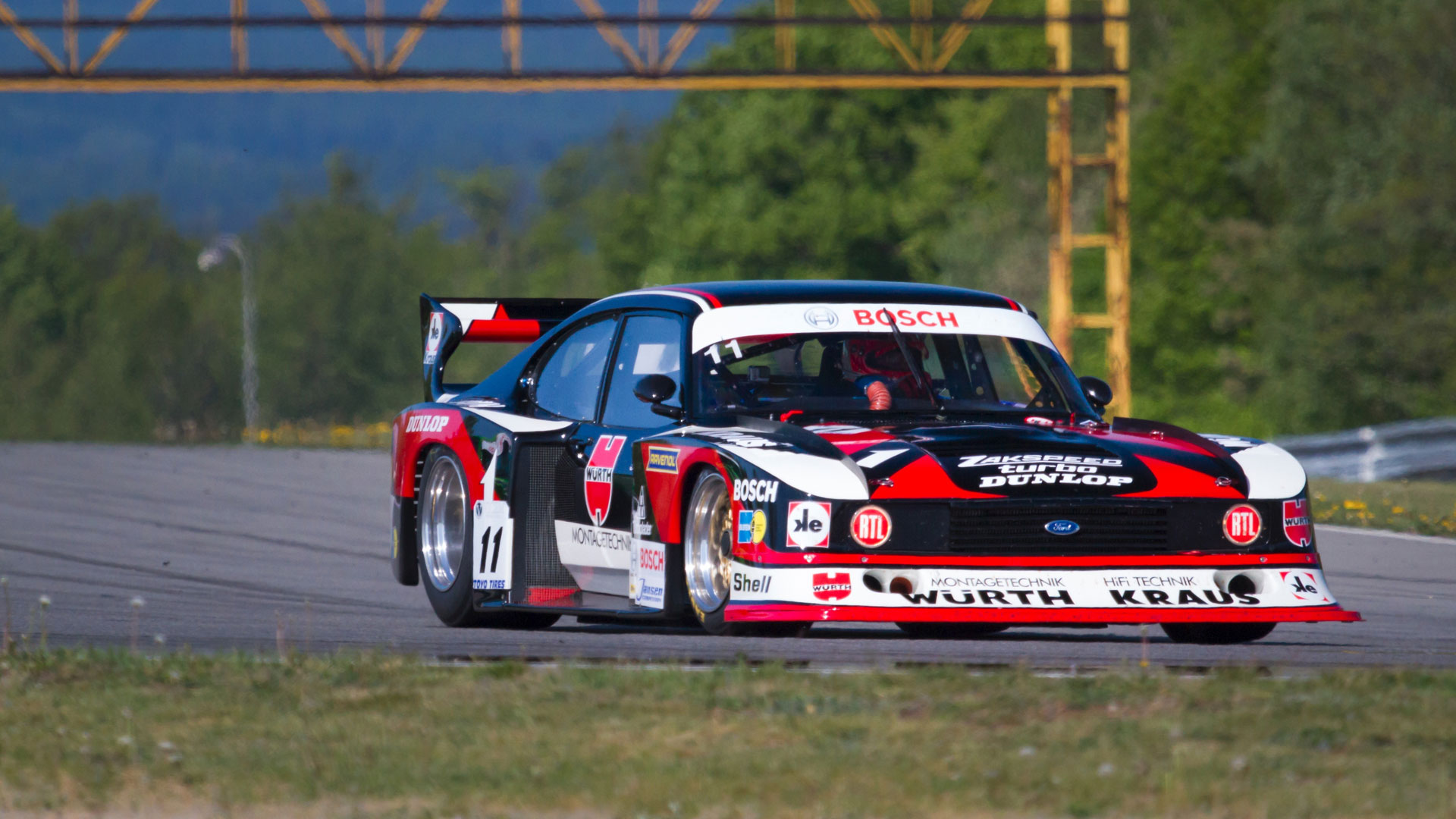
Zakspeed Capri
© ZRyzner – ShutterstockThe Capri proved to be a formidable force in motorsport, with the car securing victories as early as February 1969 and then continuing to be successful throughout the 70s and 80s. This gallery doesn’t focus on the Capri in racing, but it’s worth mentioning one particular legendary car: the Zakspeed Capri.
Built for Group 5 racing in Germany, the Zakspeed Capri caught the eye thanks to its low and imposing Kevlar 49 plastic bodywork, deep front spoiler and rear wing. And if that wasn’t enough, the Zakspeed Capri would often be seen with fire coming out of its side-mounted exhaust. Magic stuff.
-
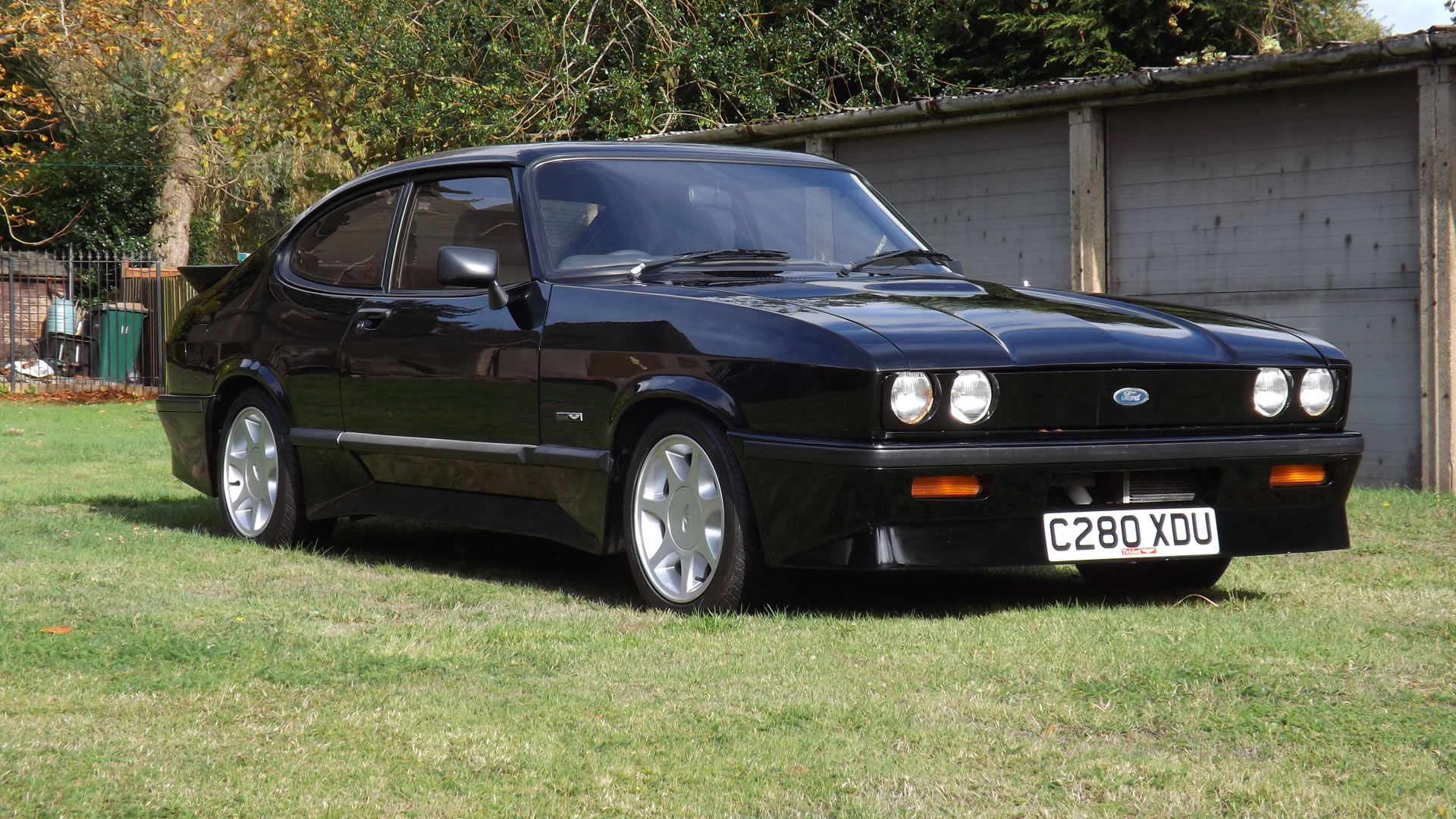
Tickford Capri
© Classic Car AuctionsThe Tickford Capri made its debut at the 1982 Birmingham Motor Show, with an initial price of £14,985, some £6,000 more than the standard 2.8i. In fairness, Tickford carried out a comprehensive makeover – including mounting a Japanese IHI turbocharger to the V6 engine – but this was an awful lot of money for a blue-collar hero.
Standard features included a walnut dashboard, an alarm and electric windows, but extras such as full leather, Wilton carpets and a stainless steel exhaust were optional.
-
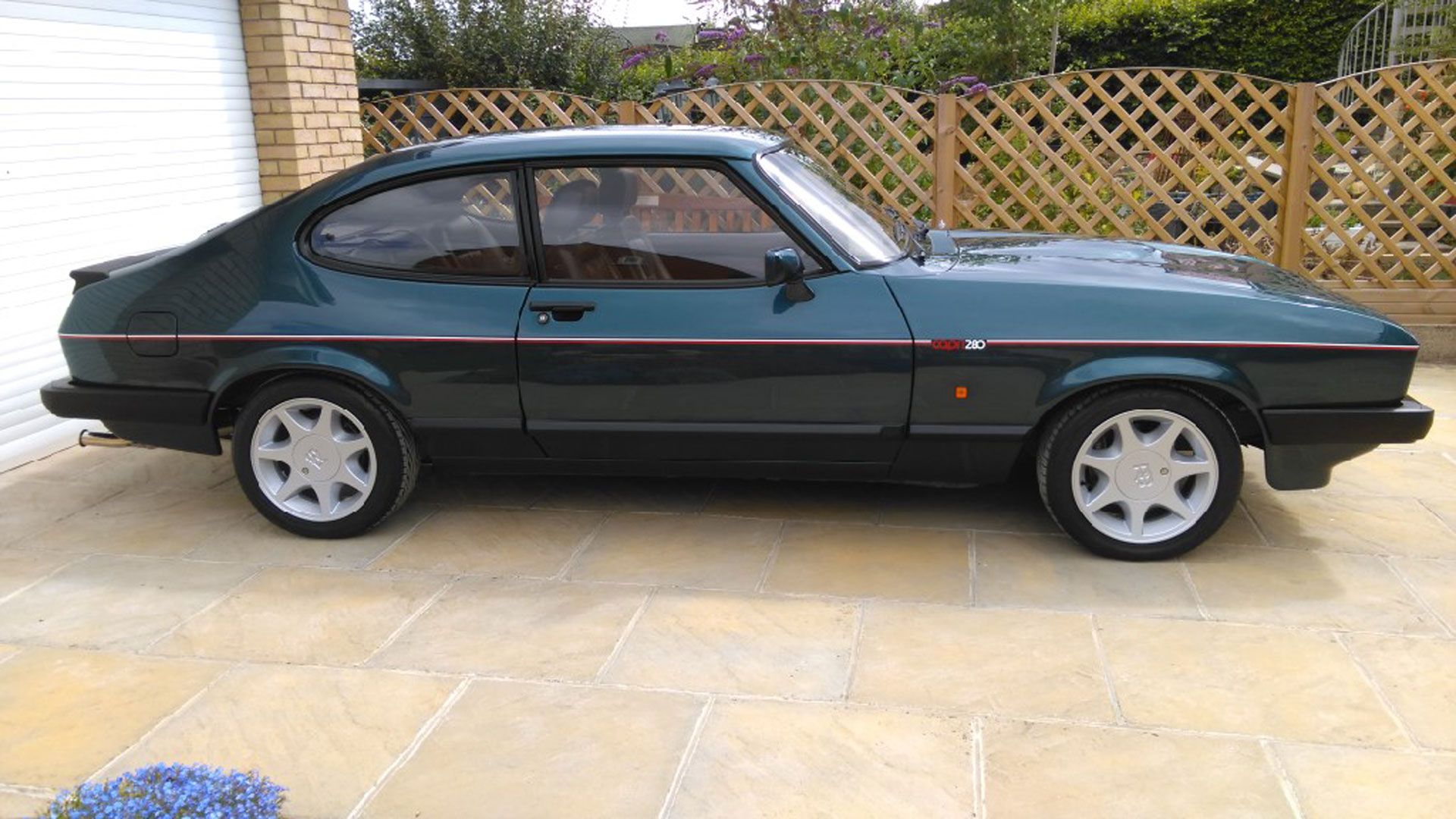
Turbo Technics Capri
© NewspressThe Tickford wasn’t the only turbocharged Capri. In Germany, Ford teamed up with Zakspeed to offer the Capri Turbo, complete with flared arches, rear wing and front spoiler. Oh, and the small matter of a 200hp 2.8-litre turbocharged engine.
Meanwhile, UK buyers were offered a turbocharged Capri thanks to a Ford-backed Turbo Technics conversion. The Northamptonshire firm offered braking upgrades to cope with the extra power, which ranged from 200hp to 230hp. This photo shows a Capri 280 with a Turbo Technics conversion.
-
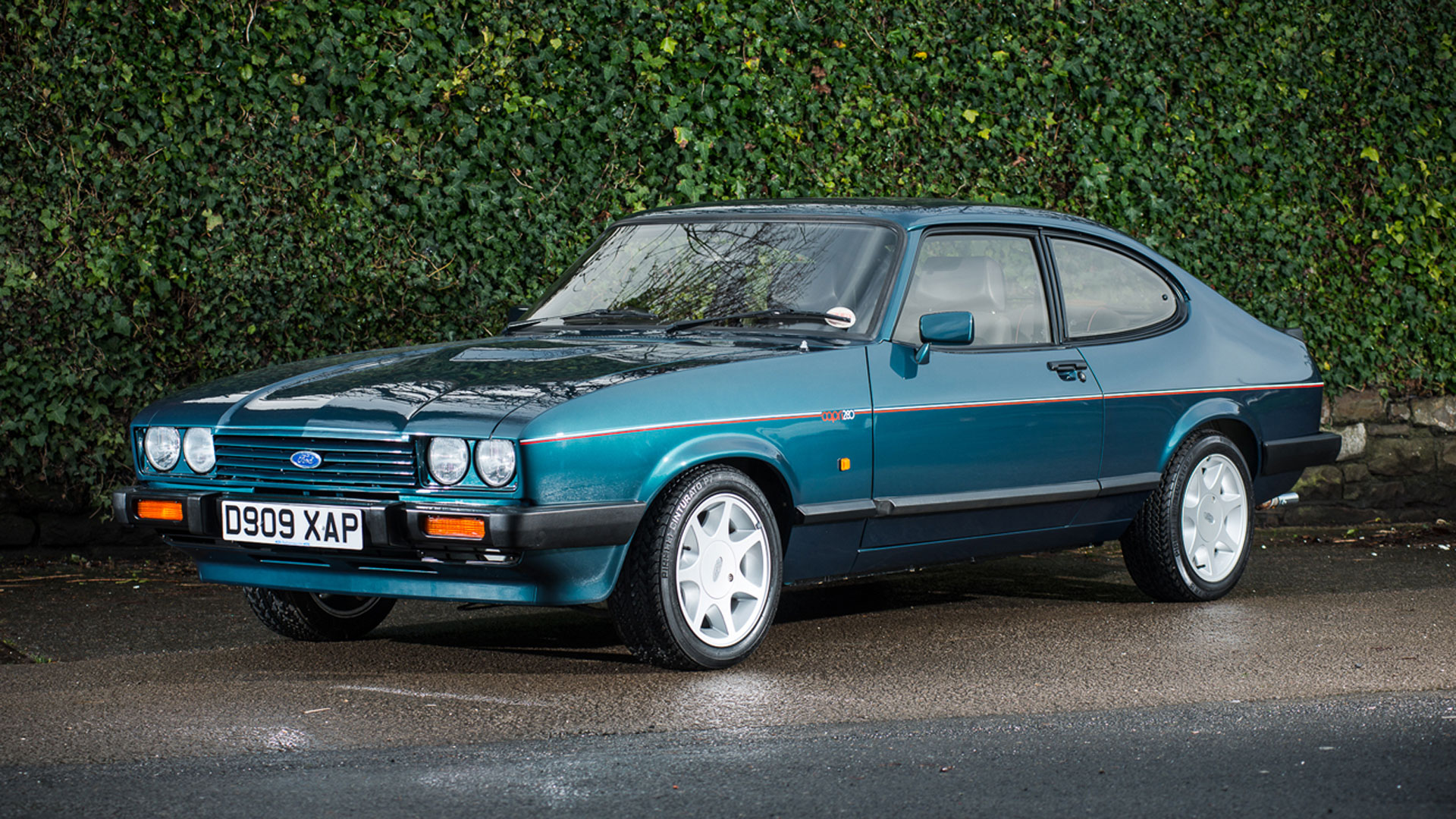
You could barely give them away
© Silverstone AuctionsIt took a while for the Ford Capri to recover from its image problem. I remember a time when it seemed almost impossible to sell a Capri, especially if it had a four-cylinder engine. I owned a succession of Capris – a brace of 1.6 Lasers, a 2.0 Ghia, a pair of 2.8s and a 280 ‘Brooklands’ – and on each occasion my purchases were greeted with ridicule.
Today, I could take a year off work and enjoy a few trips around the world if I owned that little lot. Heck, the Capri 280 is almost a passport to print money. One thing’s for sure: the days of Capris appearing in the ‘bargain basement’ section of the classifieds are long gone – it’s now a gilt-edged classic car. And rightly so. After all, the Ford Capri really did keep its promise.
With a possible comeback on the horizon, will it do so again?